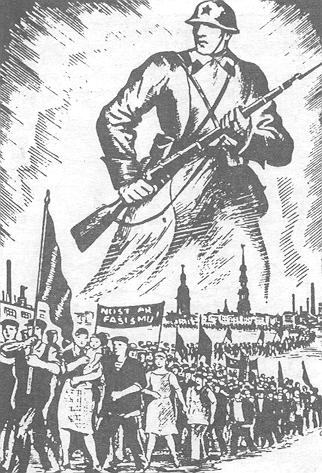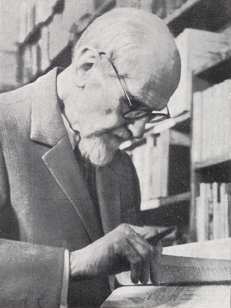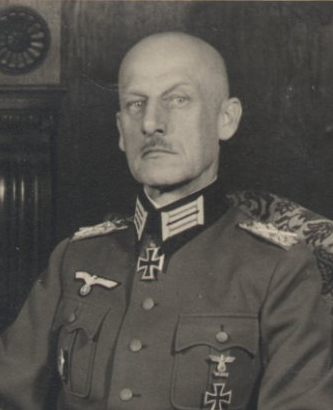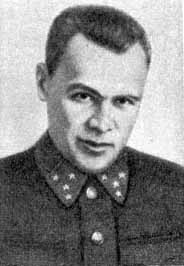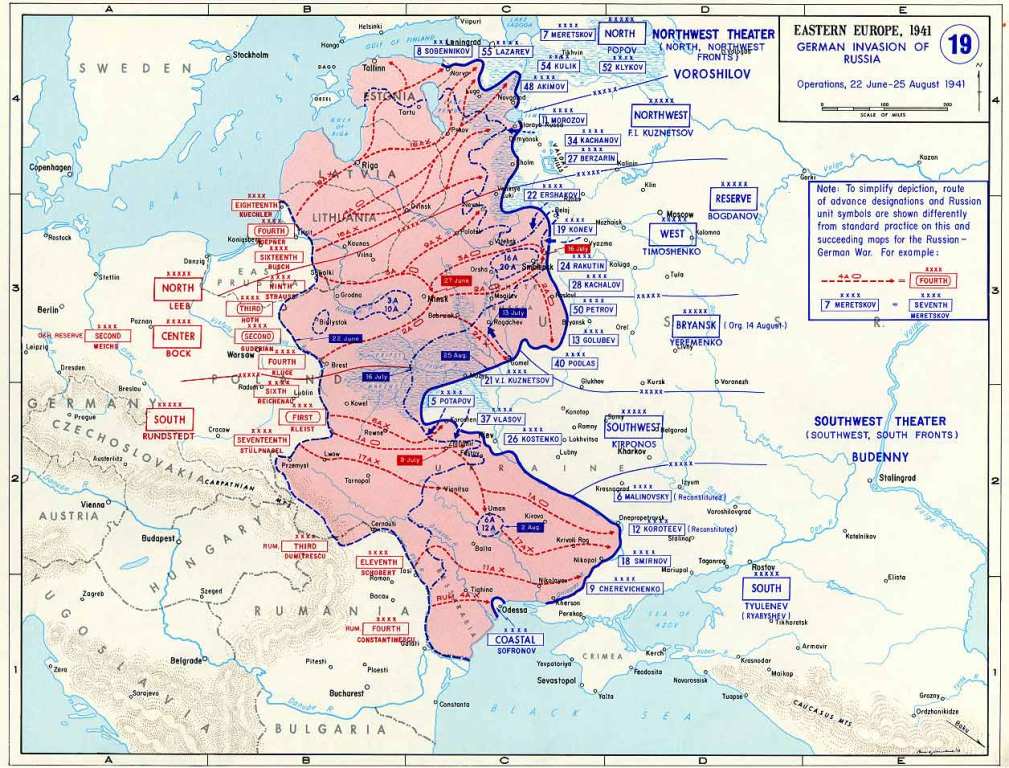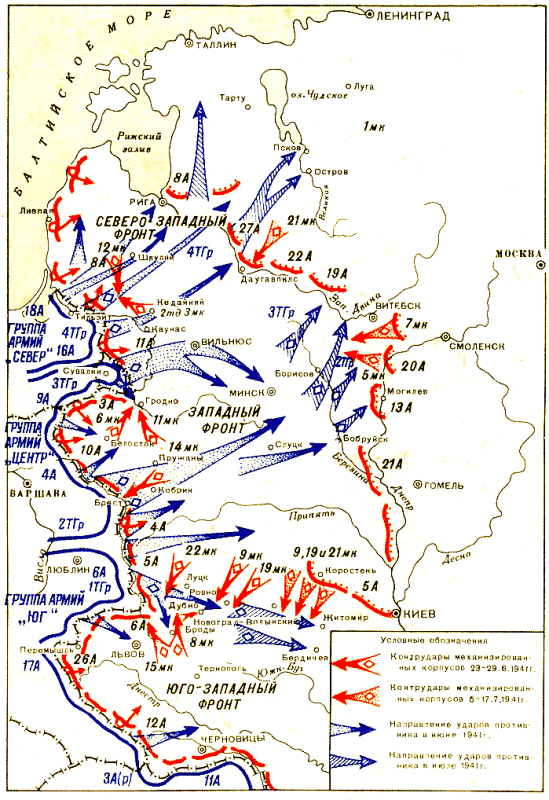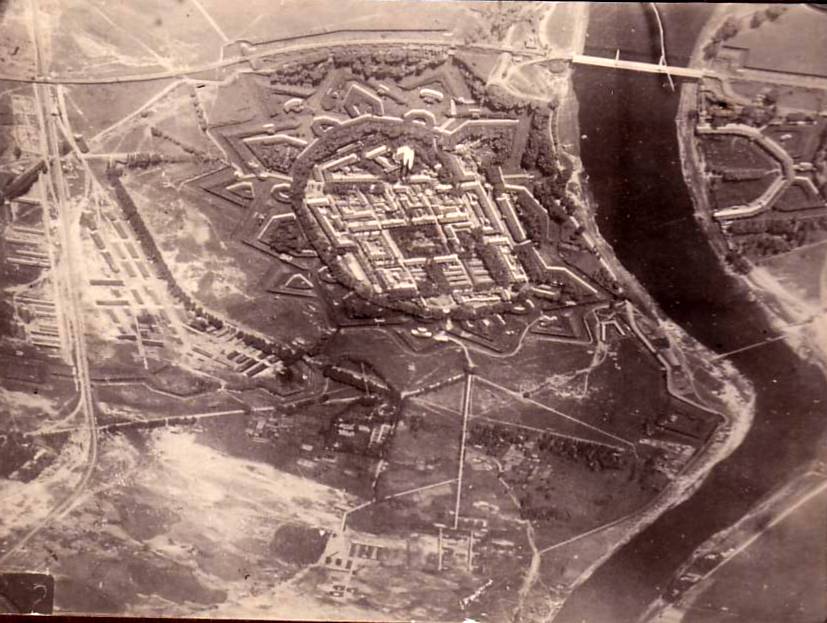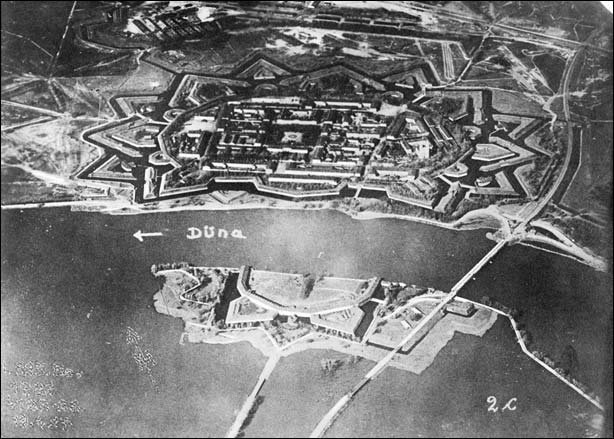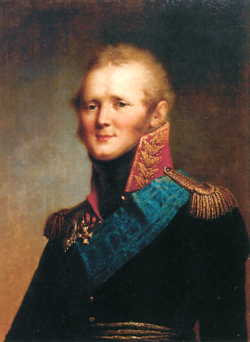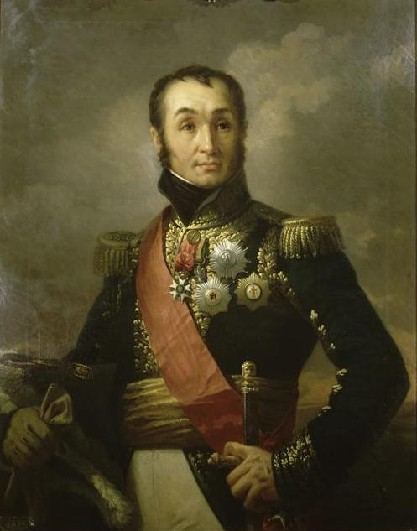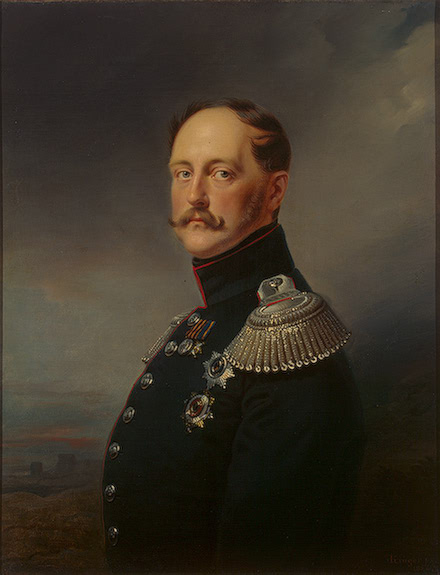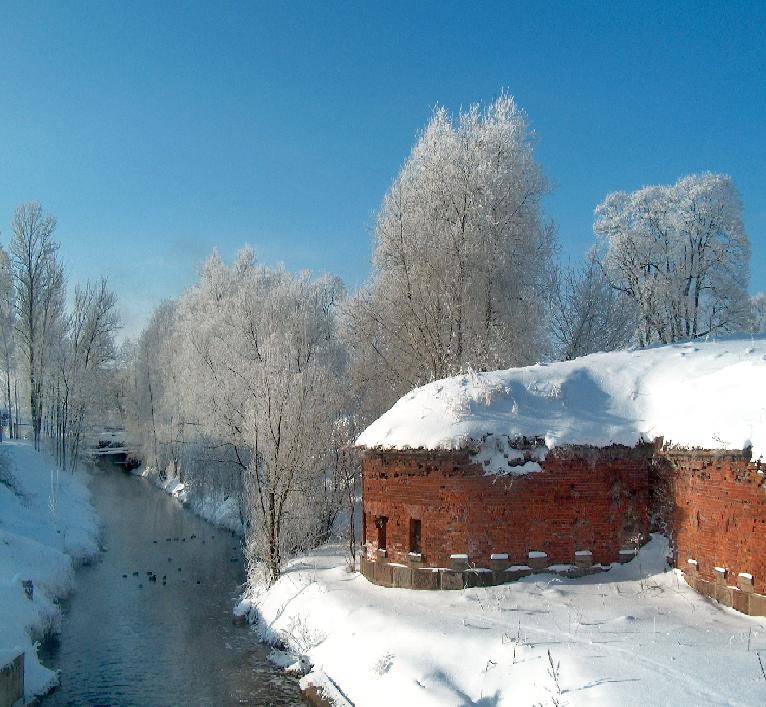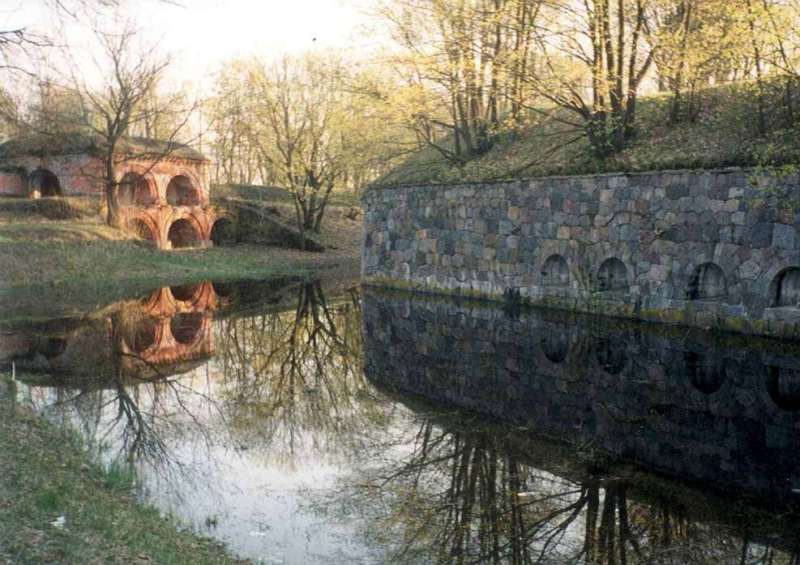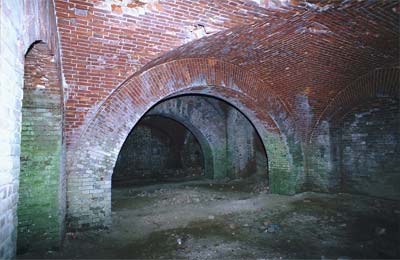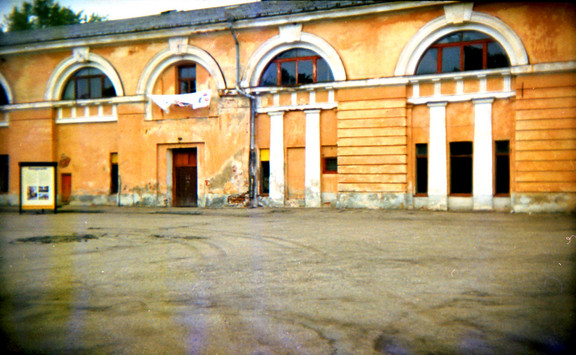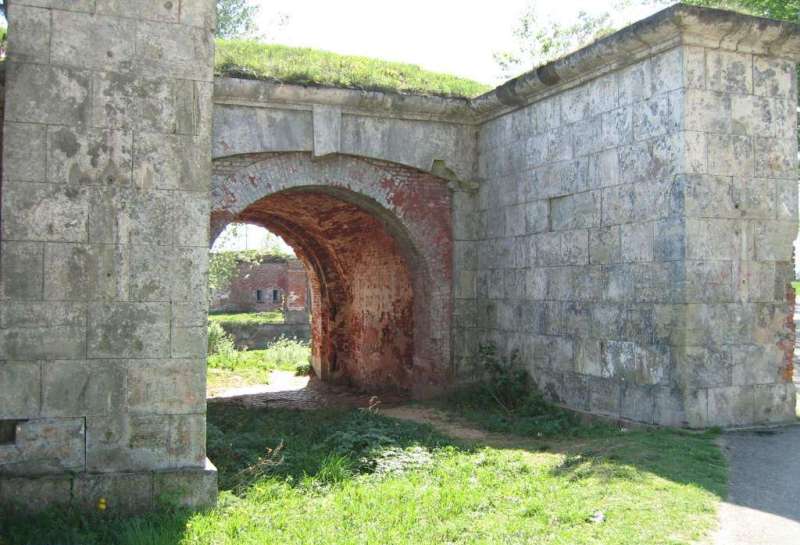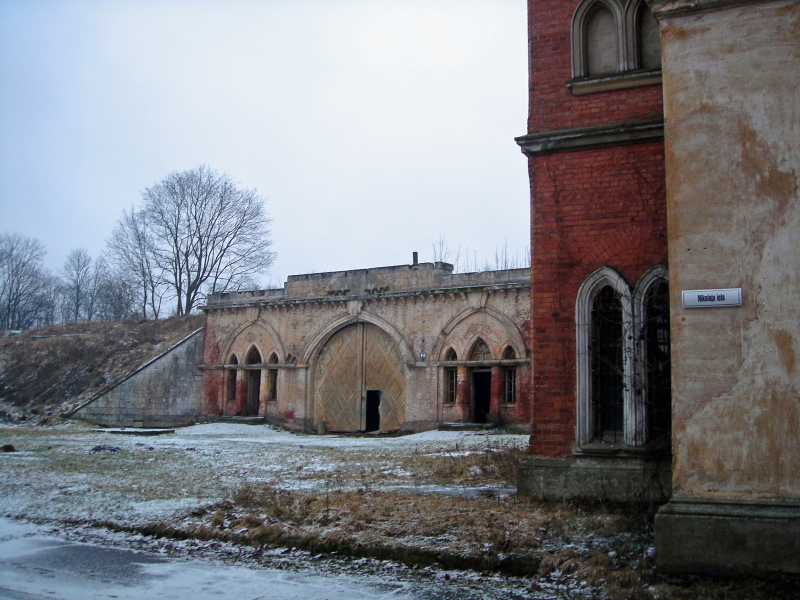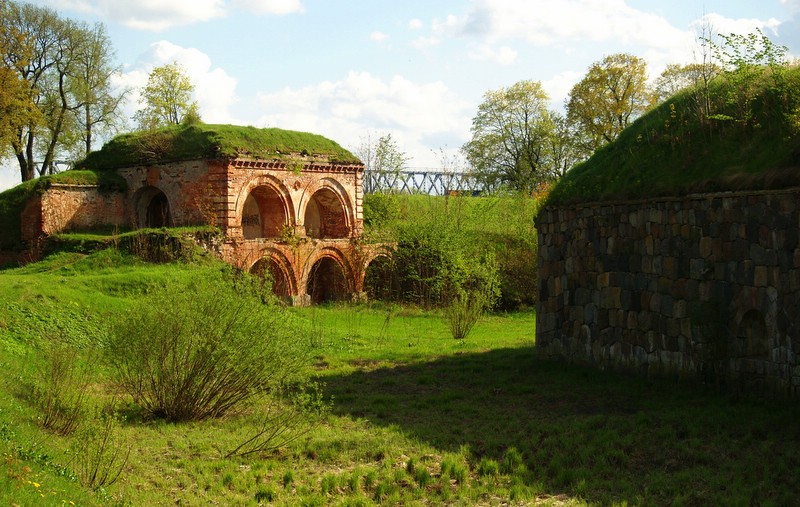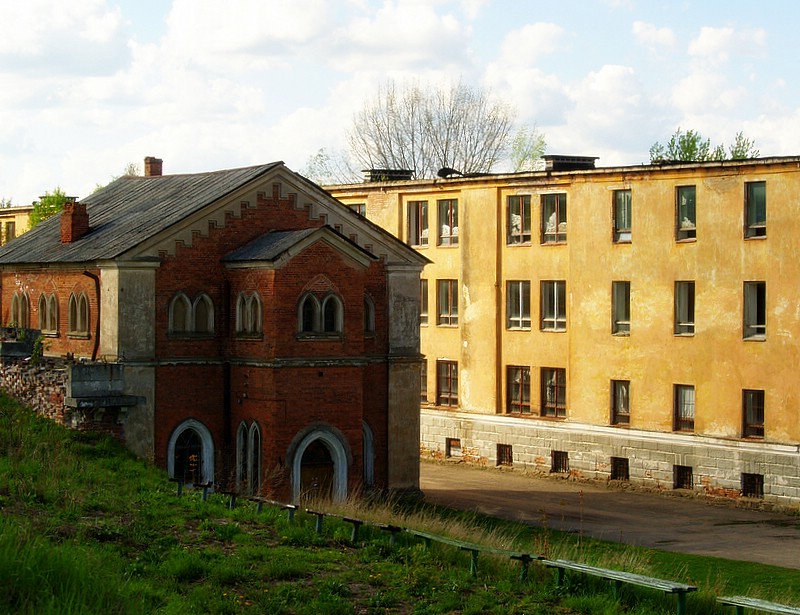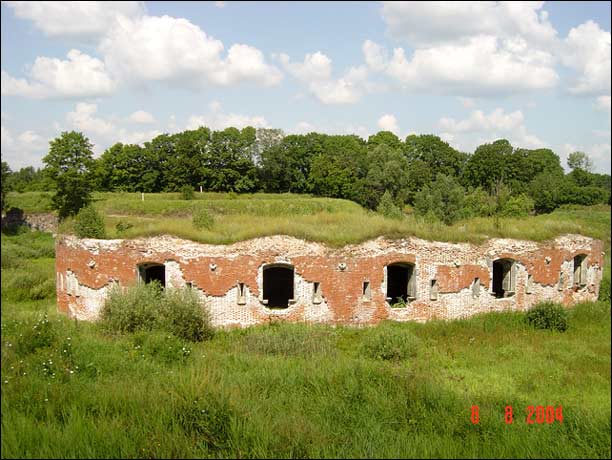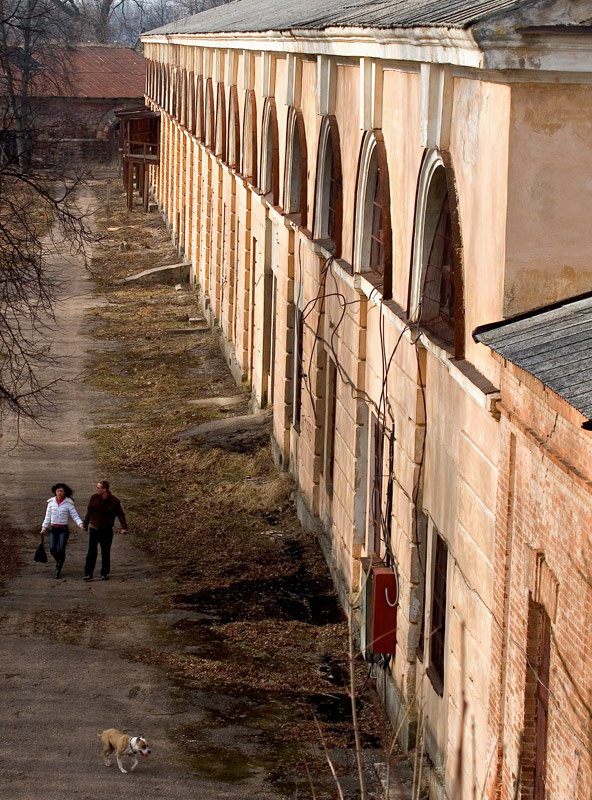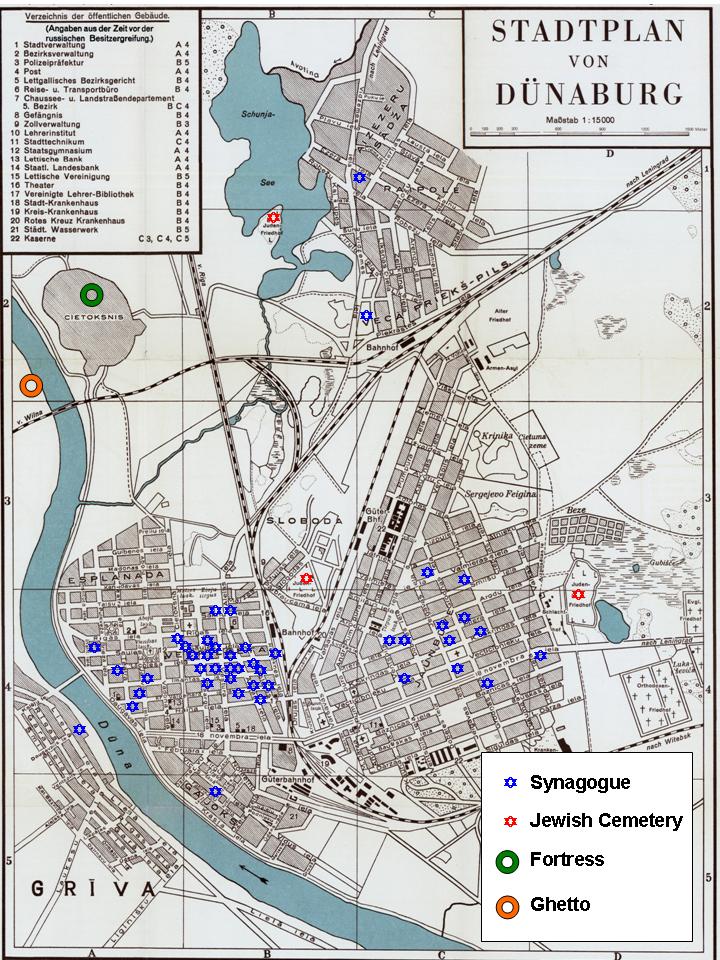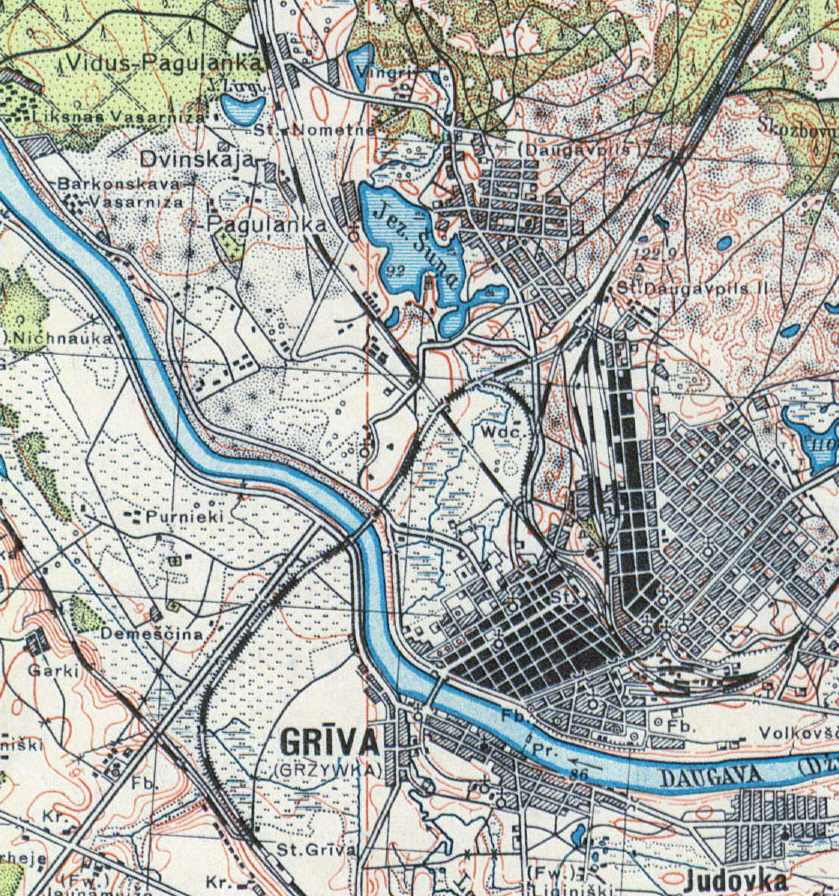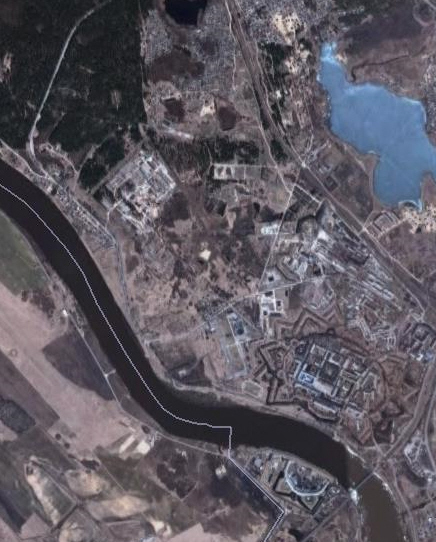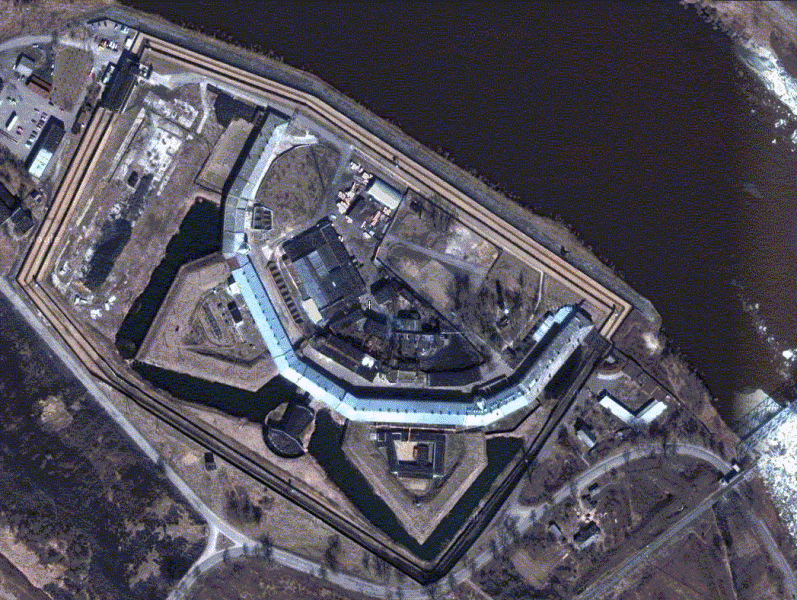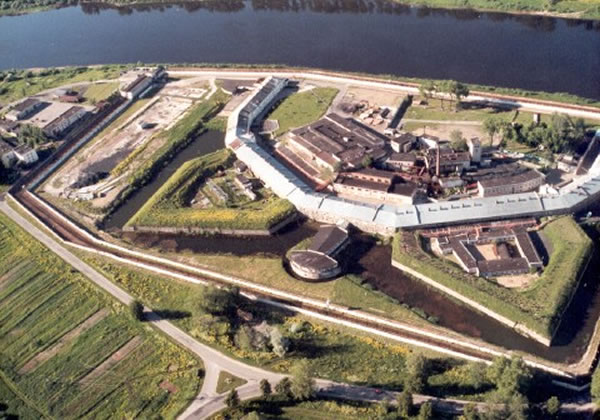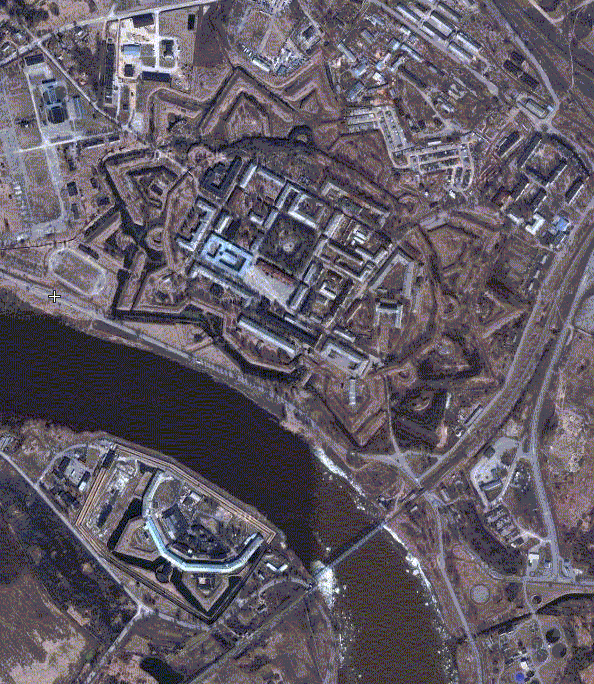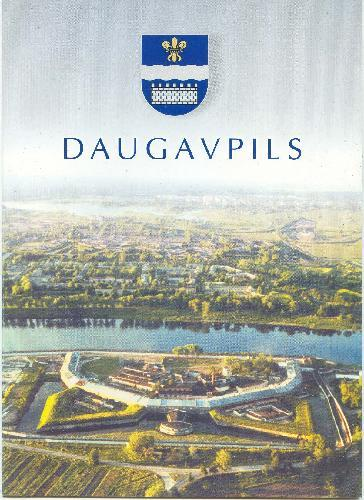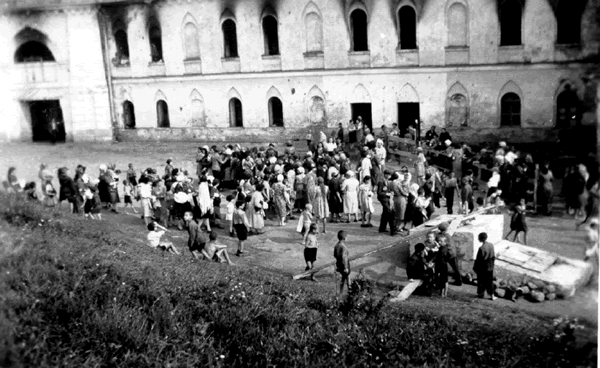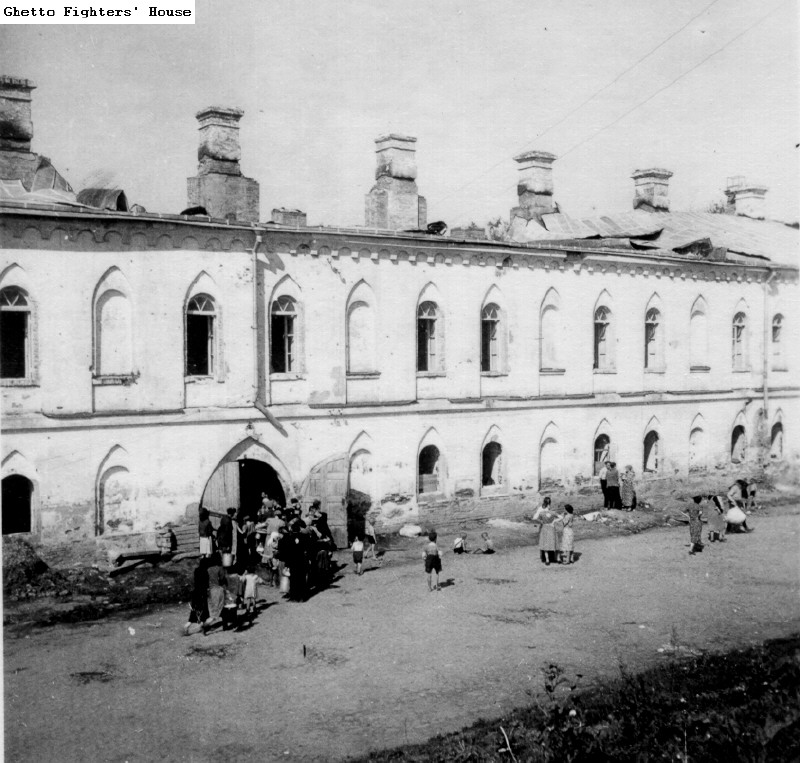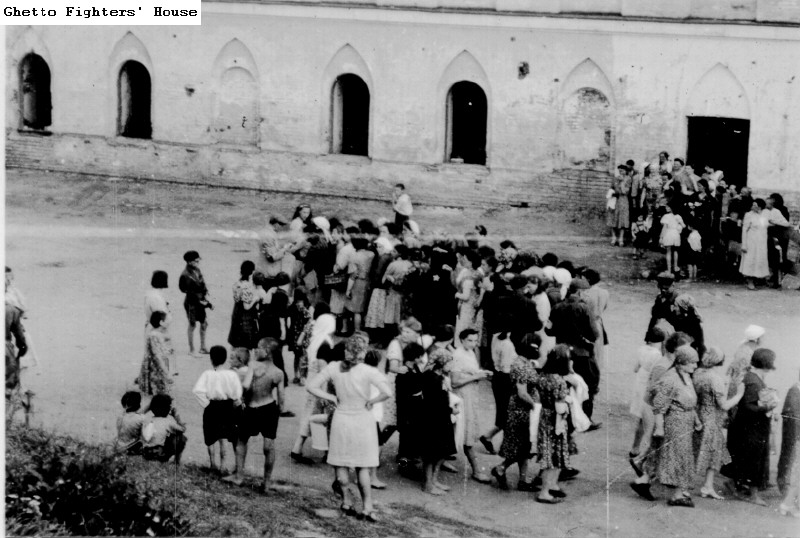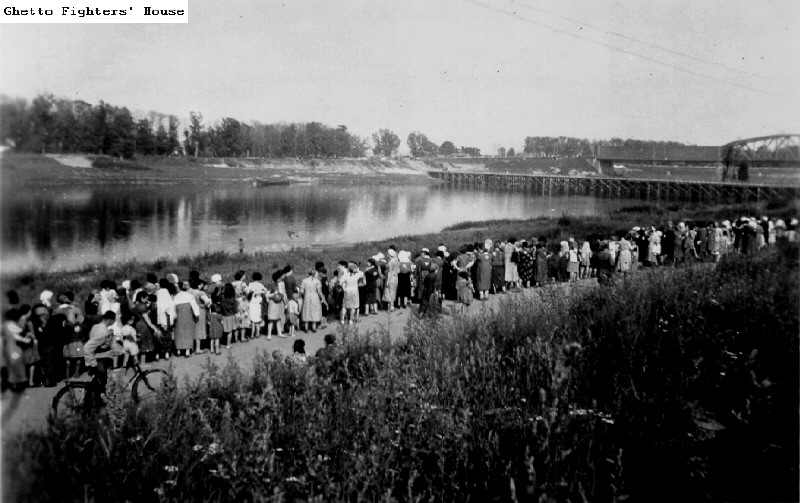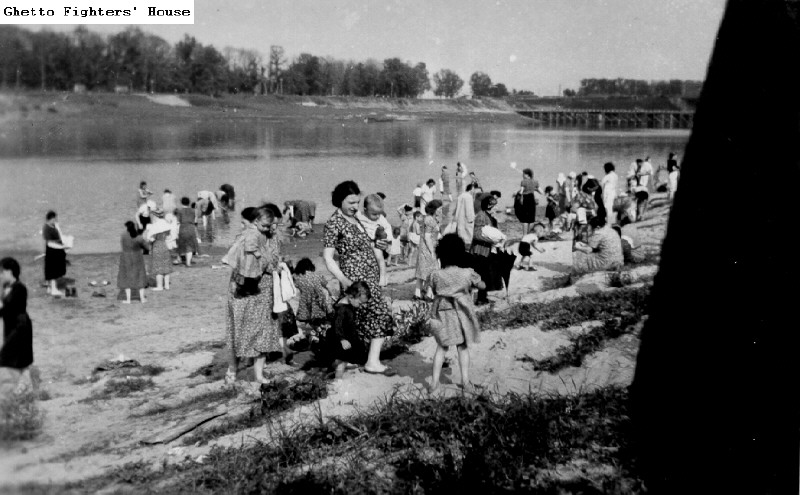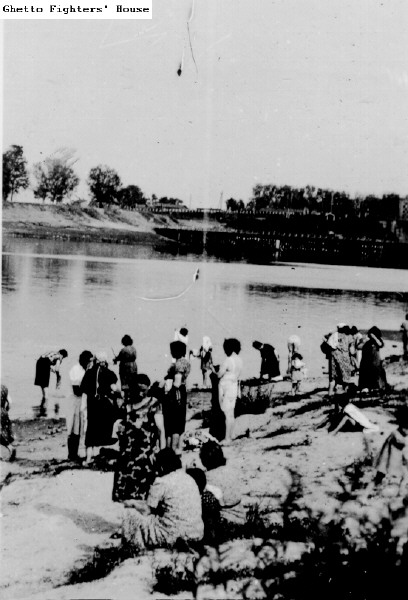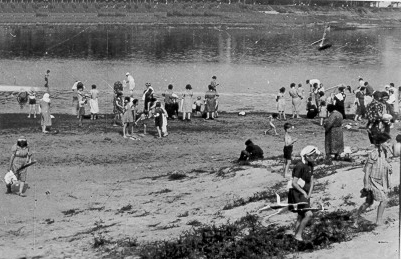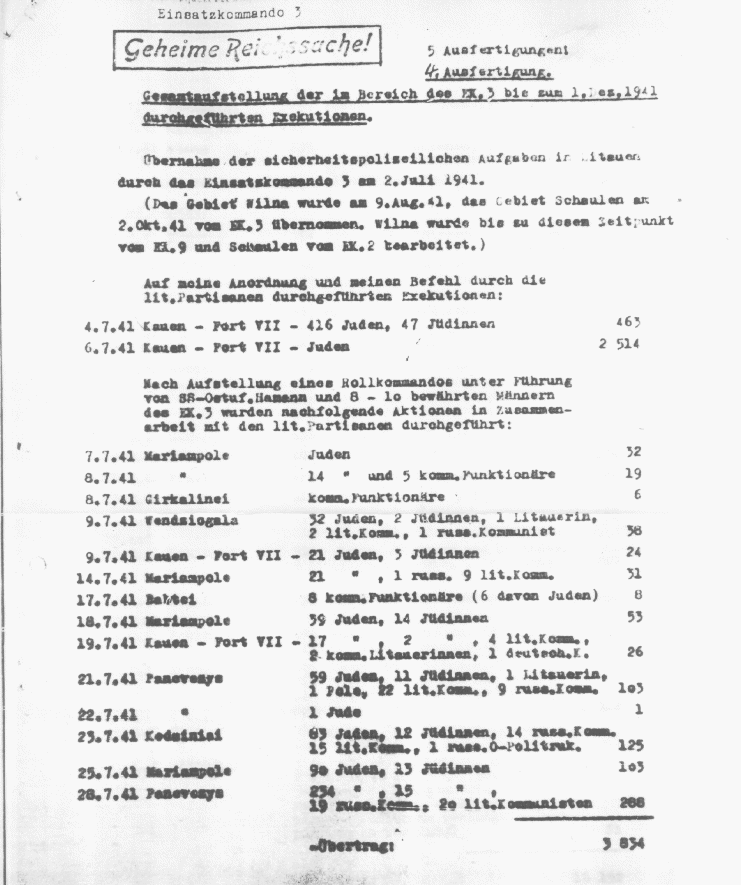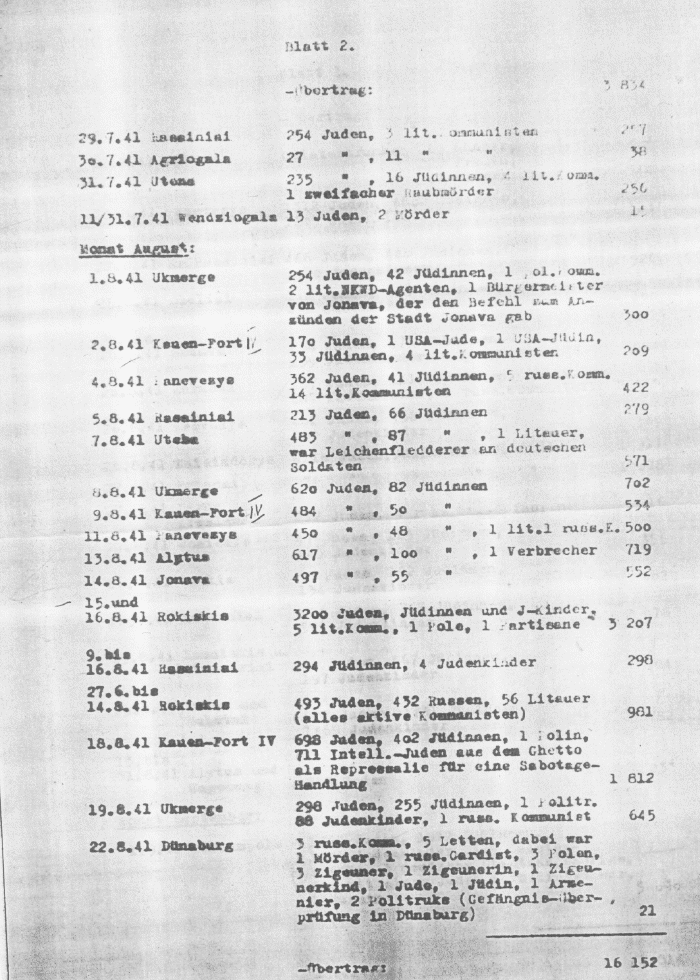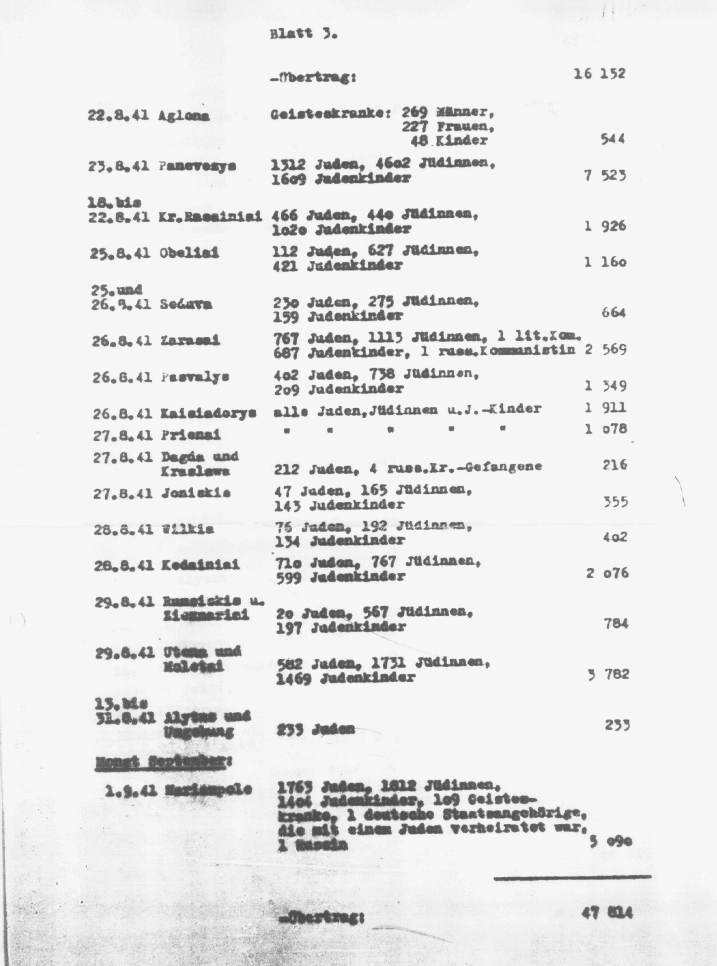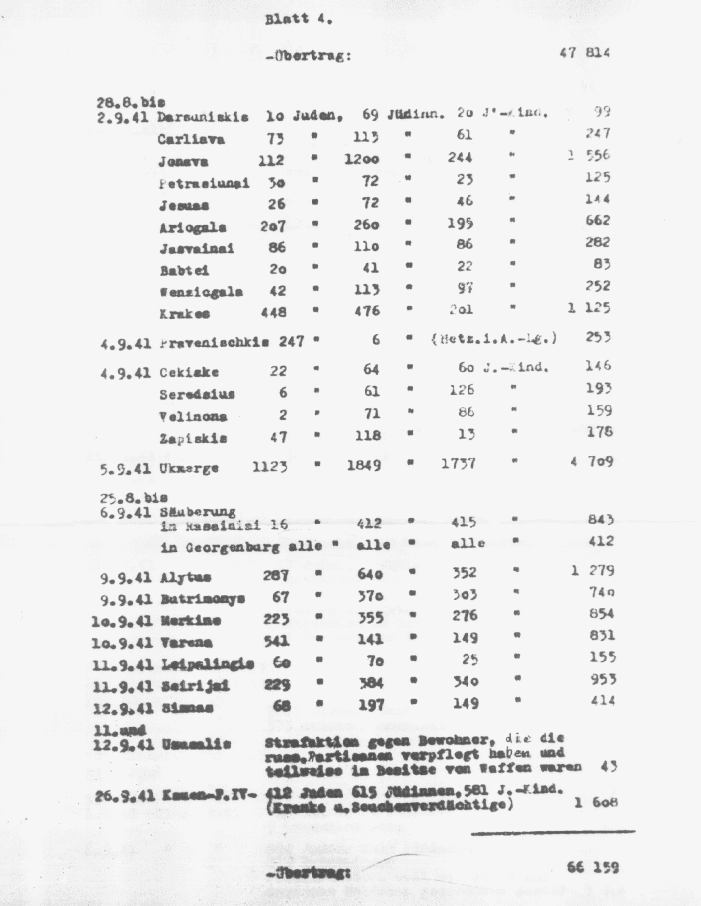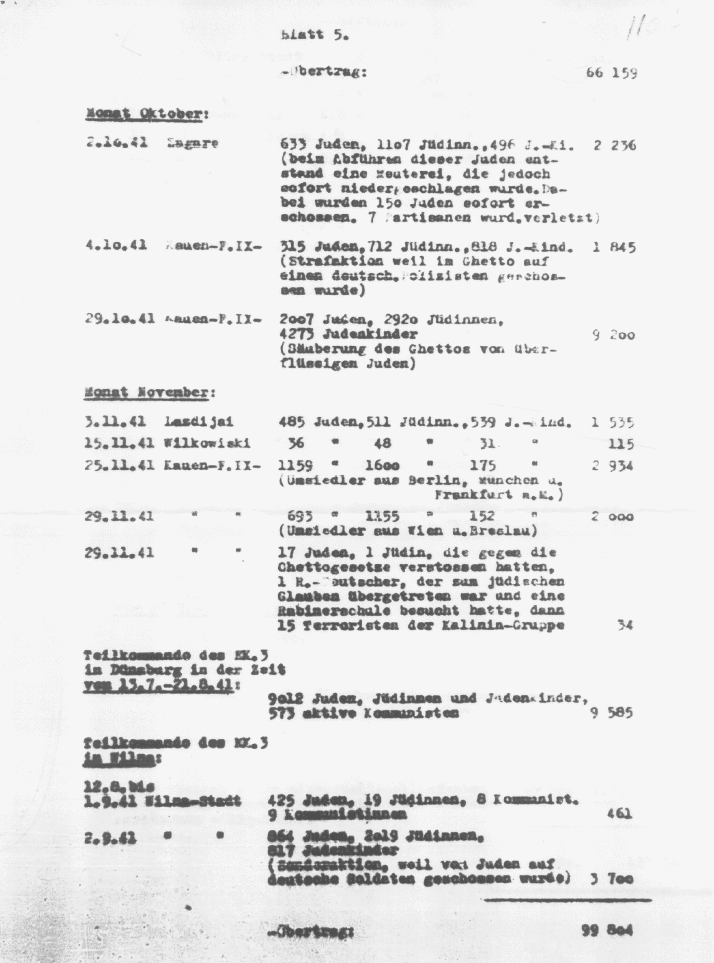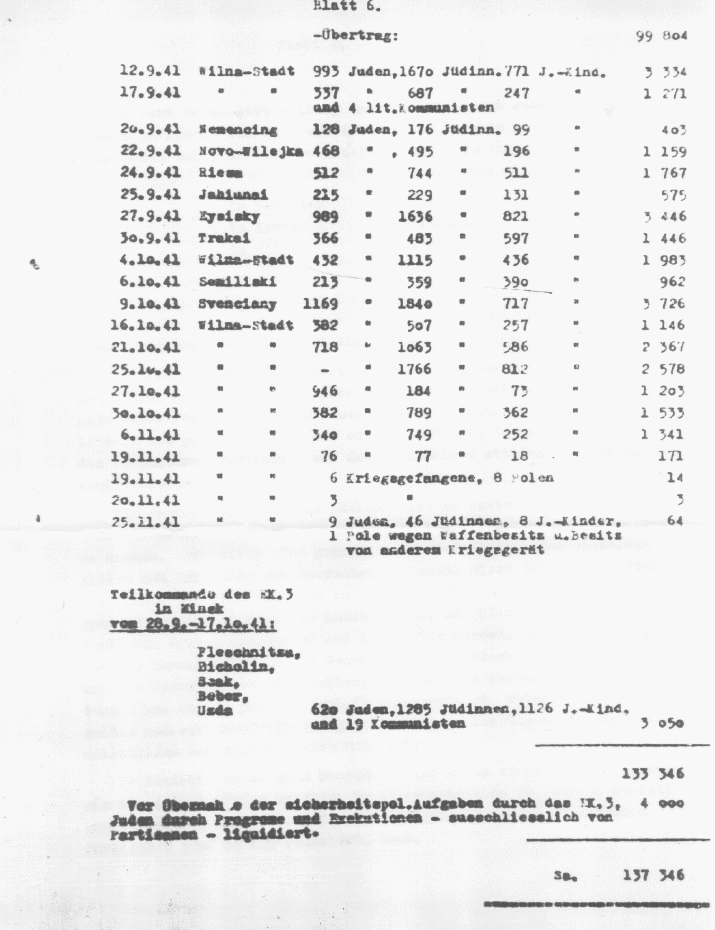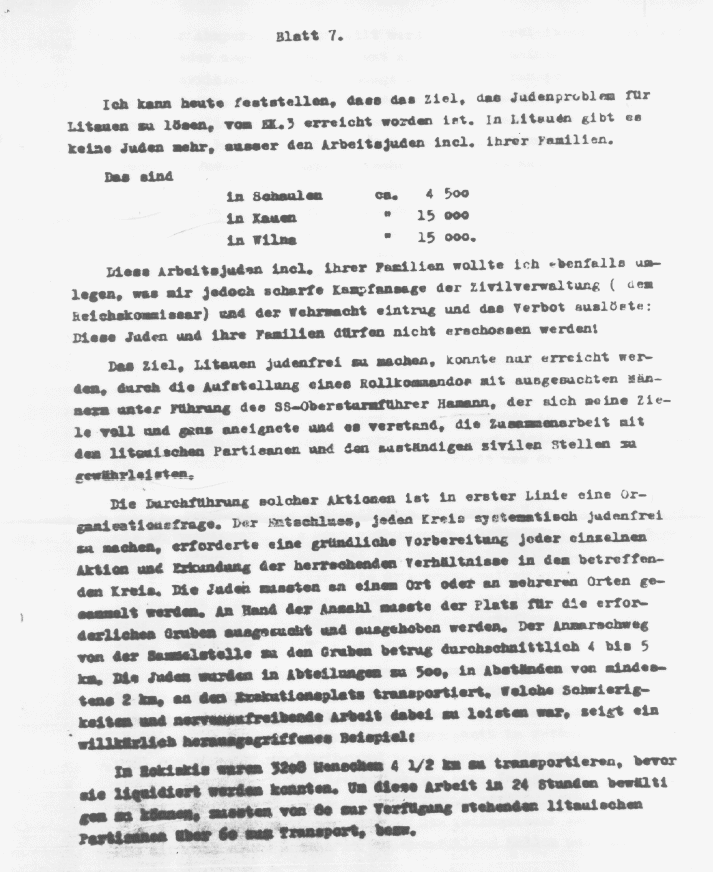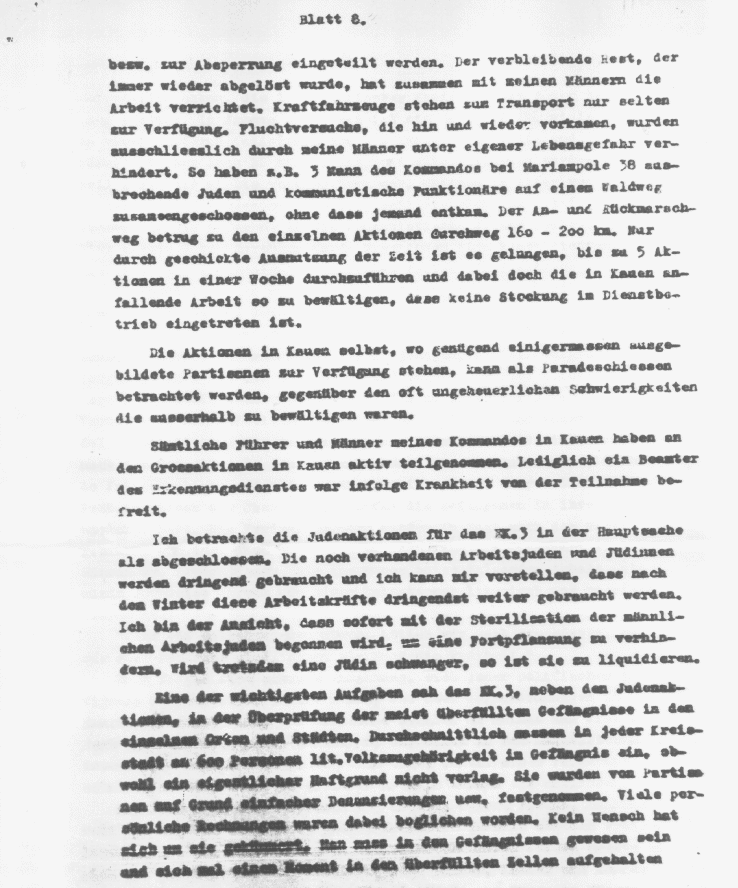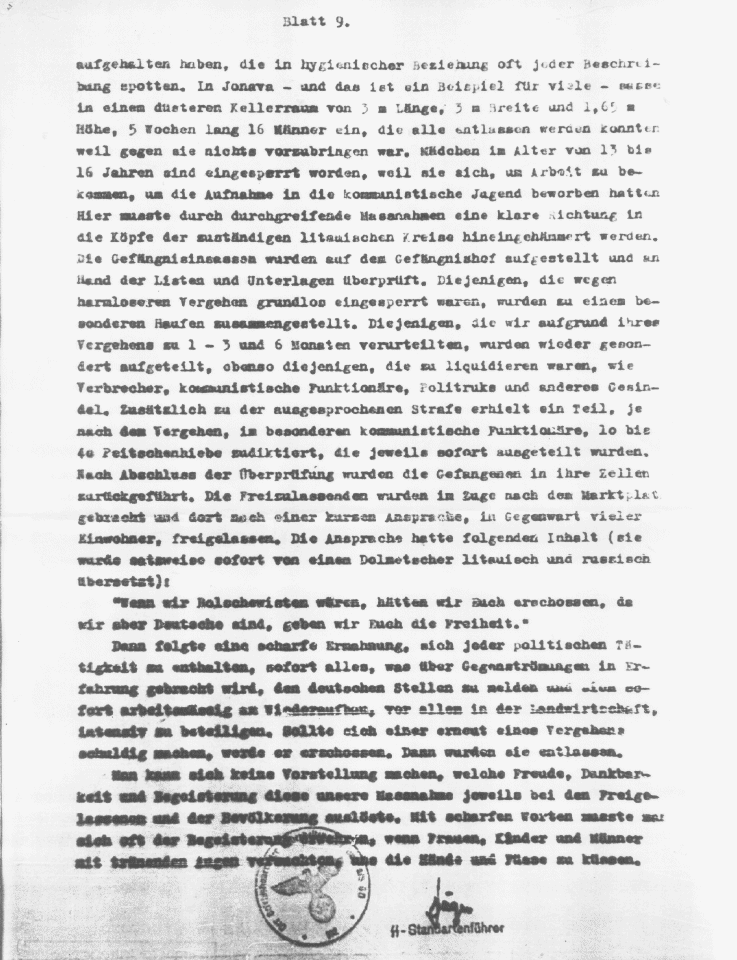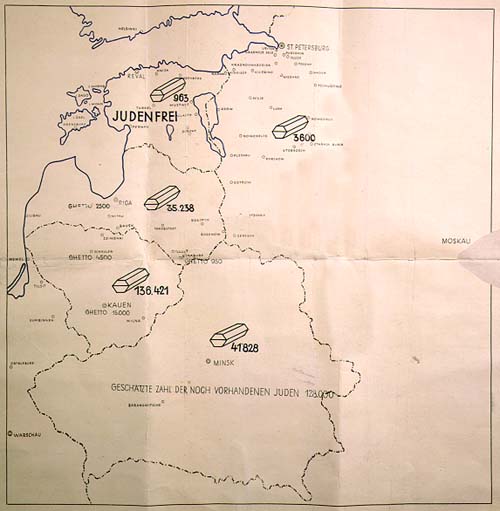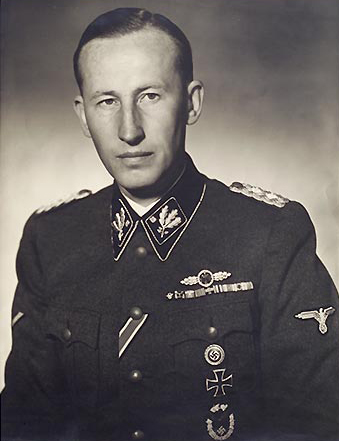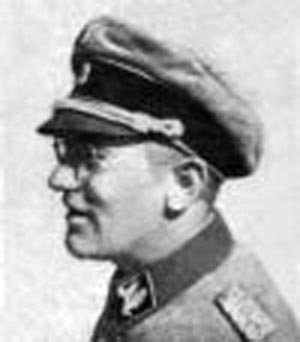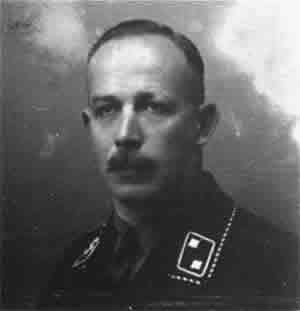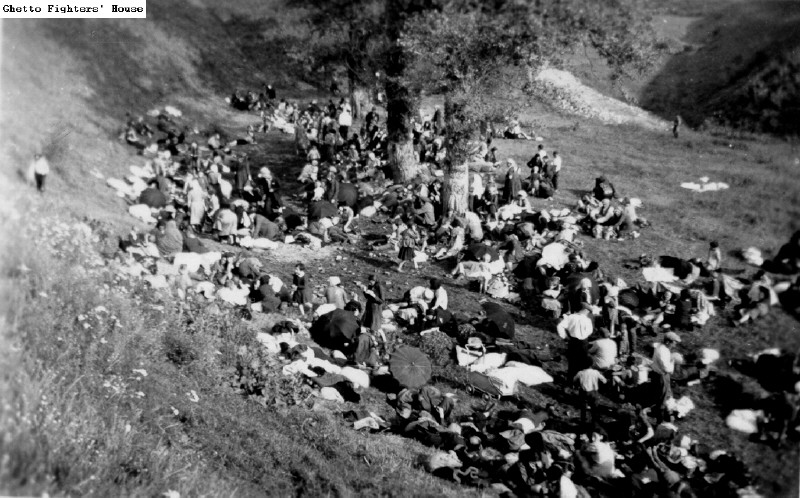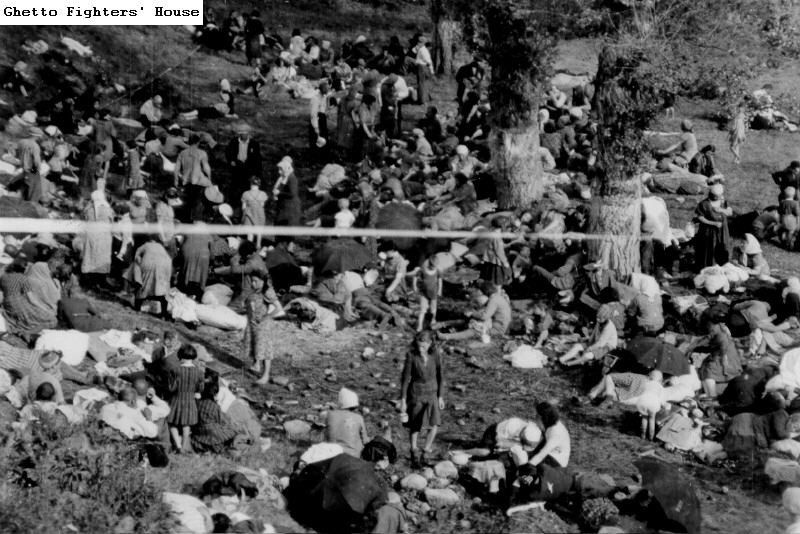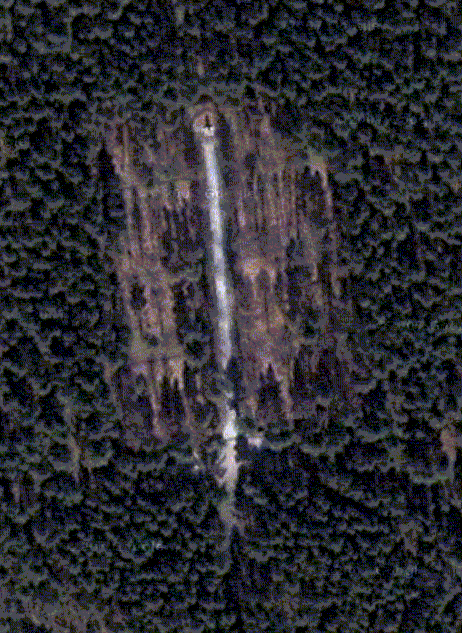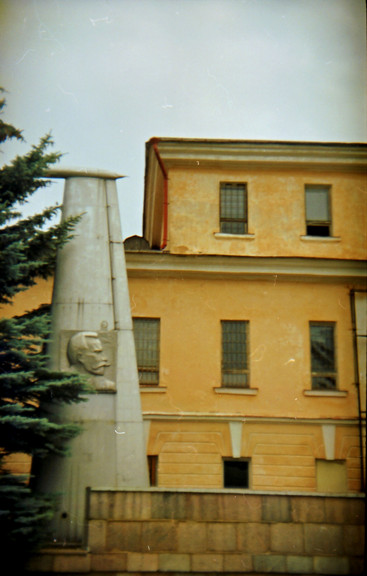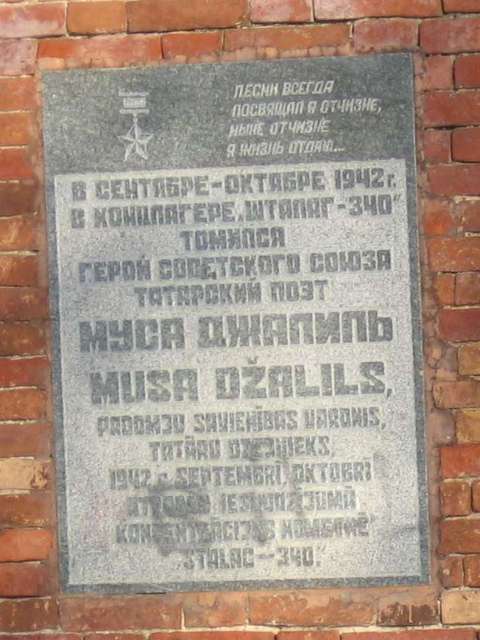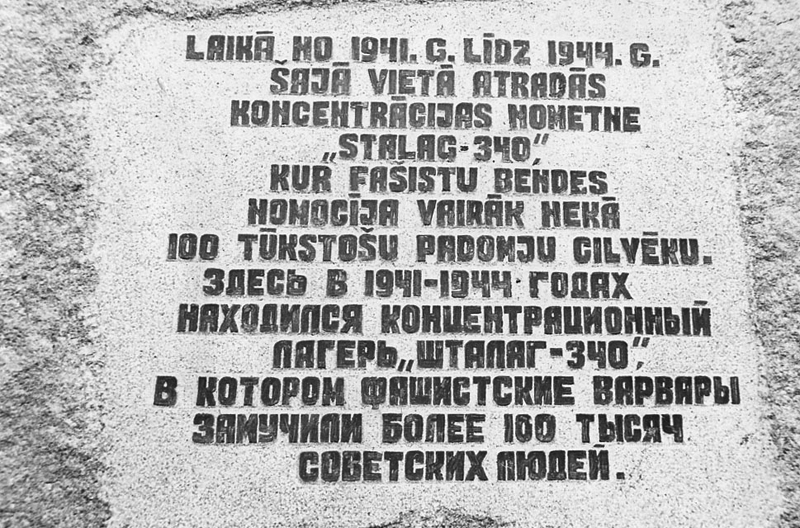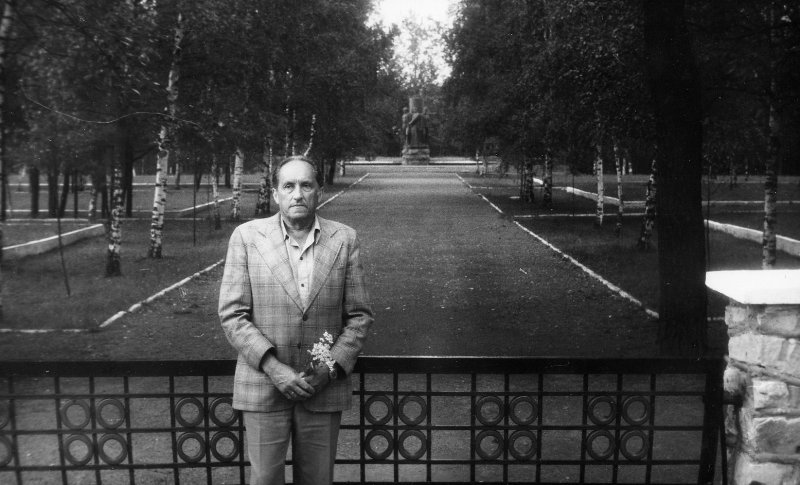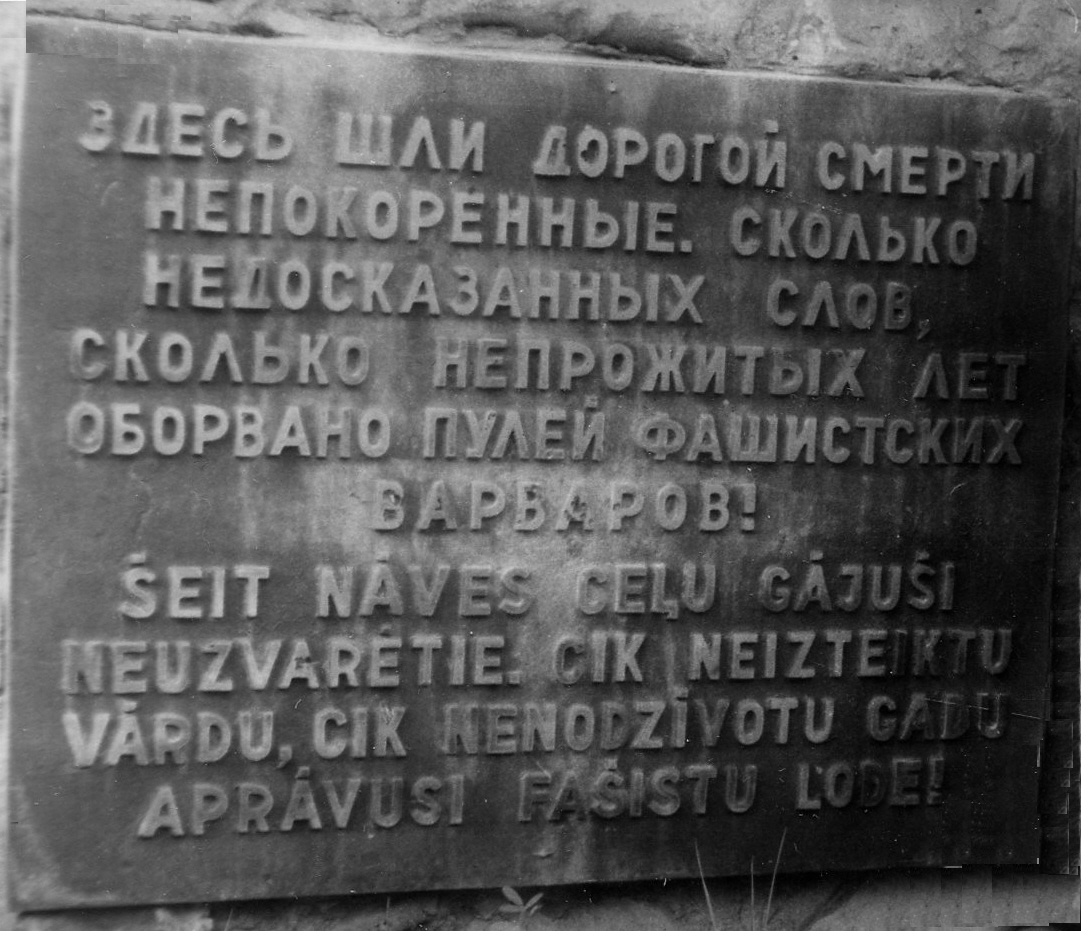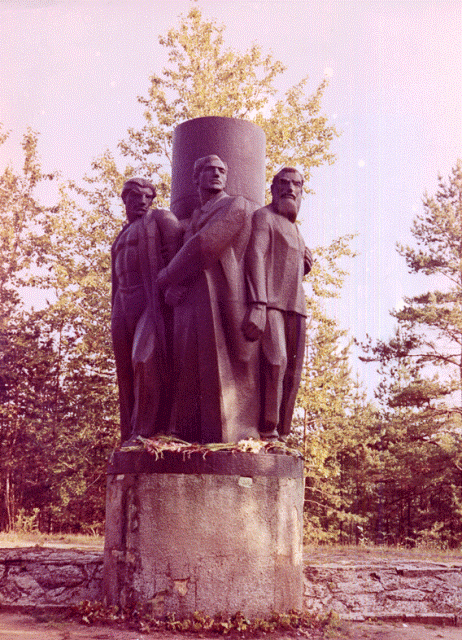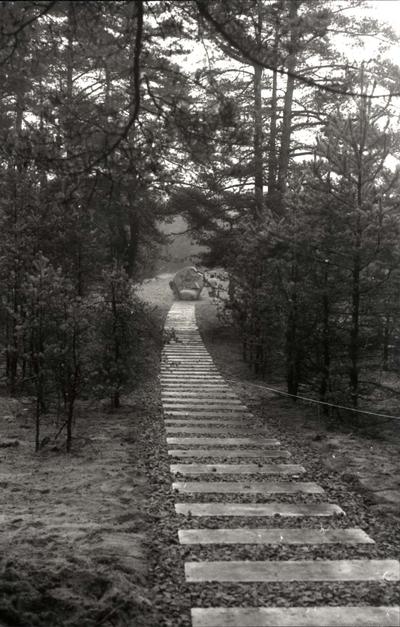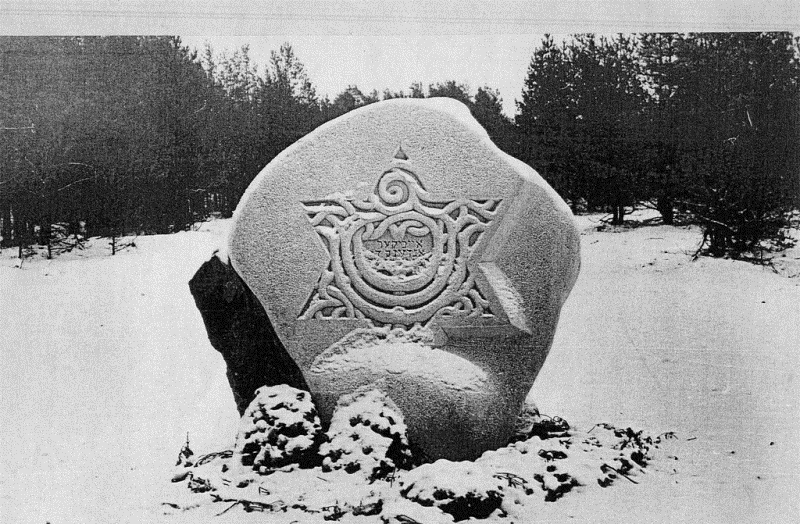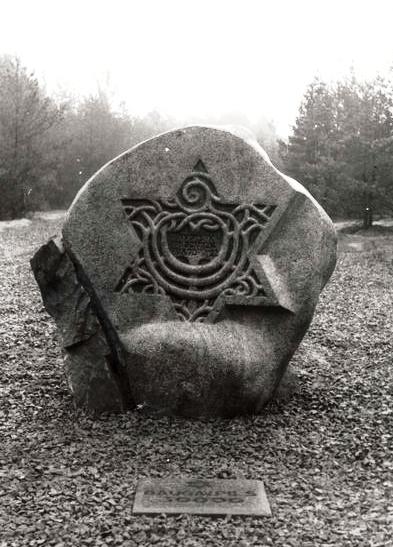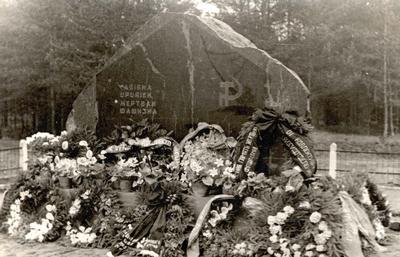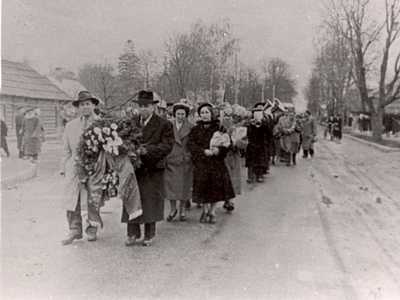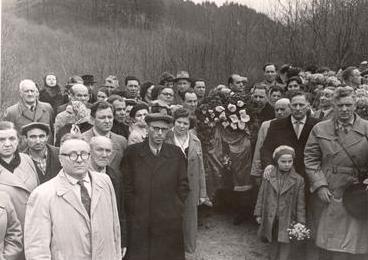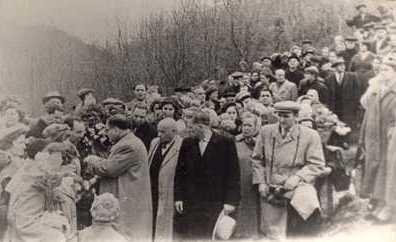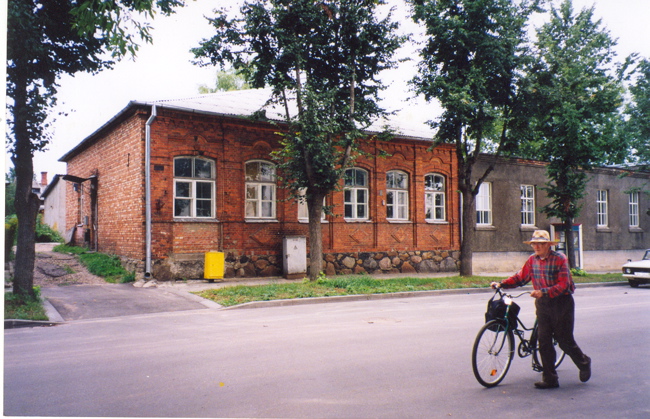
The Holocaust in Kraslava


The Death of the Jewish Community of Kraslava
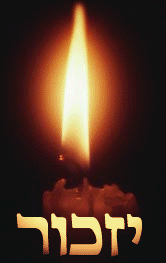
'Write down! Record!'
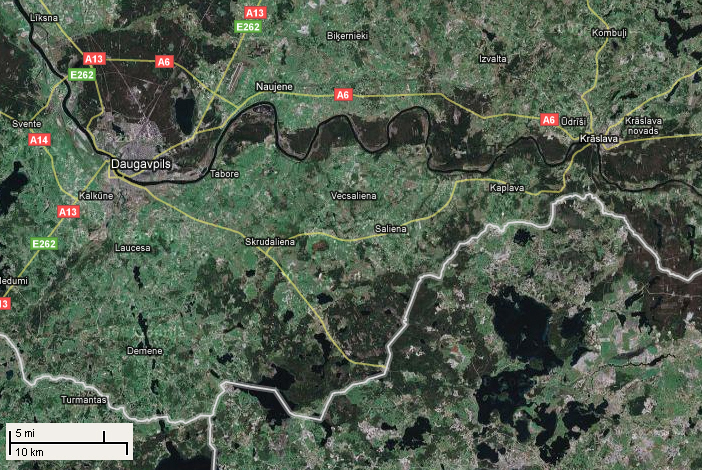
The centuries of Jewish life in Kraslava would end in a short two month period of satanic German-Nazi rule. The Nazi terror resulted in the total destruction of the Kraslava Jewish community at the hands of the Nazis and their local collaborators in the nearby city of Daugavpils (Dvinsk), together with the Jews of Daugavpils itself and the surrounding Jewish shtetlach of Griva, Preili, Viski, Livani and Dagda.
Viski

Griva
Daugavpils Fortress
Ghetto
Ghetto
Pogulanka Forest
BELARUS
LATVIA

Dvina (Daugava) River
(Dvinsk)
Slobodka
Braslav
Augustovka Forest
LITHUANIA
© Google Earth
The Last Path of the Jewish Community of Kraslava
Enter the Red Army - The Soviets Occupy Latvia
The division of spheres of influence between the Soviet Union and Nazi Germany that formed the secret protocol of the Ribbentrop - Molotov non-aggression pact brought the Red Army into Latvia on June 17th 1940. Immediately the previously illegal Latvian Communist party was legalised and the red flag raised above the public buildings of Kraslava. Vladislav Pozaucu was appointed mayor and on July 15th 1940 elections were held for the Saeima (parliament), the only party on the ballot paper being the Working Party block. A number of Jews took a leading role in the new regime after emerging from the communist underground that existed under Ulmanis. After Latvia 'requested' its annexation to the USSR on August 5th 1940 the Saeima delegation, returning from Moscow by train, stopping at railway stations along the line to conduct rallies with the local population. On reaching Kraslava the new leaders of the Latvian SSR, Augusts Kirhenshteins and Vilis Lacis, made speeches to the people of Kraslava to convince them of the benefits of the integration with the USSR.
The division of spheres of influence between the Soviet Union and Nazi Germany that formed the secret protocol of the Ribbentrop - Molotov non-aggression pact brought the Red Army into Latvia on June 17th 1940. Immediately the previously illegal Latvian Communist party was legalised and the red flag raised above the public buildings of Kraslava. Vladislav Pozaucu was appointed mayor and on July 15th 1940 elections were held for the Saeima (parliament), the only party on the ballot paper being the Working Party block. A number of Jews took a leading role in the new regime after emerging from the communist underground that existed under Ulmanis. After Latvia 'requested' its annexation to the USSR on August 5th 1940 the Saeima delegation, returning from Moscow by train, stopping at railway stations along the line to conduct rallies with the local population. On reaching Kraslava the new leaders of the Latvian SSR, Augusts Kirhenshteins and Vilis Lacis, made speeches to the people of Kraslava to convince them of the benefits of the integration with the USSR.
Communism brought change. Commercial enterprises were nationalised, officials of the previous regime lost their positions, the educational curriculum adjusted itself to the Soviet system and religious education was prohibited. With time the initial tolerance dissipated and the youth were pressured to participate in the youth activities of Pioneer and Comsomol. Now subject to the new communist policies, Jewish community institutions and non-communist organisations were closed, including the Chevra Kadisha which was closed by Government order in December 1940, as were all the Zionist youth movements.
Still most of the Zionist youth remained loyal and tried to avoid participation in the communist youth movement, leading some to flee to Riga to avoid political and economic persecution. Anti-soviet activity was heavily punished. In September 1940 four pupils were arrested for hanging posters attacking the new regime. After their detention in the Dvinsk prison they were exiled to Siberia, along with twenty other residents. Many died in exile, the survivors returning after the war. In June 1941 some of the richer Jews of Kraslava were exiled to Siberia, something that would paradoxically save their lives. With the imminent invasion of the Nazi forces the Red Army executed three leading Kraslava Catholics prior to their retreat.
Augusts Kirhenshteins
Latvian Communist Party Poster
The Great Patriotic War - Operation Barbarossa and the Occupation of Kraslava
On the 22nd June 1941 Operation Barbarossa commenced with the advance of the the 16th Army and the 4th Panzer Army of the Wehrmacht's Army Group North under Generalfeldmarschall Wilhelm Ritter von Leeb, who attacked the North-Western Front of the Red army commanded by General Colonel Fyodor Kuznetsov. The Germans advanced quickly, crossing the Daugava River close to Daugavpils, capturing the fortress and creating a bridgehead. Kraslava was bombarded, killing a number of the civilians including Esther Ramban-Swartzman, the wife of Pawel Swartzman. Between the 1st to 4th July 1941 the 21st Mechanised Division and the Rifle Corp of the 27th Army of the Red Army, who were stationed in the town, made a strategic retreat to the east and the Nazis occupied Kraslava.
On the 22nd June 1941 Operation Barbarossa commenced with the advance of the the 16th Army and the 4th Panzer Army of the Wehrmacht's Army Group North under Generalfeldmarschall Wilhelm Ritter von Leeb, who attacked the North-Western Front of the Red army commanded by General Colonel Fyodor Kuznetsov. The Germans advanced quickly, crossing the Daugava River close to Daugavpils, capturing the fortress and creating a bridgehead. Kraslava was bombarded, killing a number of the civilians including Esther Ramban-Swartzman, the wife of Pawel Swartzman. Between the 1st to 4th July 1941 the 21st Mechanised Division and the Rifle Corp of the 27th Army of the Red Army, who were stationed in the town, made a strategic retreat to the east and the Nazis occupied Kraslava.
Ritter von Leeb
Kuznetzov
In the first days after the war broke out hundreds of refugees from Latvia and Lithuania moved eastwards towards Kraslava because of its proximity to the former USSR border. The Jewish community provided them shelter in their homes and in the synagogues. As the German army moved forward pressure mounted to escape into the Russian interior but the Jews found the border crossing blocked. On return some found their homes had been looted. Following the Luftwaffe's bombing of Kraslava, hitting a Jewish area, some 200 Jews left for the border and crossed into Russia together with officials who had been appointed by the Soviets upon their entry. Eighty-nine Kraslava Jews who crossed that day in late June 1941 went to serve in the Red
Operation Barbarossa - The Nazi Invasion of the Soviet Union - June 22nd 1941
Army during the Great Patriotic War, of whom 52 fell in action including the three sons of Azriel Plakchin, the leader of the Socialist-Zionists in the town. One of the sons served as a political commissar (politruk) in the Latvian Division of the Red Army and was posthumously awarded the Order of the Red Banner.
The Cruelty Commences
At the beginning of July 1941 the Germans occupied Kraslava. On the first day of the occupation a German officer was shot, bringing immediate retaliation against the inhabitants and the Wehrmacht began to arrest former Soviet activists and officials. Within a short period the Nazis moblised a force of Latvian auxiliary police (Schutzmannschaften) that was commanded by a local shop owner named Briedis, who would later be appointed as the collaborationist mayor.
The new police force initiated the theft, persecution and even the murder of Jews. Fifteen Jews were taken from the street and murdered in the Jewish cemetery. Others were taken to prison and then to excavate military trenches near the Dvina river, and later executed. Lithuanian Jewish refugees approaching the town on a cart were murdered nearby. Among those killed in the early days of the Nazi occupation was Israel Elitzpan who was the head of the Bund faction on the pre-war city council. Other recorded acts of brutality by the local Latvian auxiliary police include the mutilation of a Jewish child's genitalia, the forcing of a Jew to commit incest, and compelling a Jewish doctor to clean a German car with a tooth brush.
At the beginning of July 1941 the Germans occupied Kraslava. On the first day of the occupation a German officer was shot, bringing immediate retaliation against the inhabitants and the Wehrmacht began to arrest former Soviet activists and officials. Within a short period the Nazis moblised a force of Latvian auxiliary police (Schutzmannschaften) that was commanded by a local shop owner named Briedis, who would later be appointed as the collaborationist mayor.
The new police force initiated the theft, persecution and even the murder of Jews. Fifteen Jews were taken from the street and murdered in the Jewish cemetery. Others were taken to prison and then to excavate military trenches near the Dvina river, and later executed. Lithuanian Jewish refugees approaching the town on a cart were murdered nearby. Among those killed in the early days of the Nazi occupation was Israel Elitzpan who was the head of the Bund faction on the pre-war city council. Other recorded acts of brutality by the local Latvian auxiliary police include the mutilation of a Jewish child's genitalia, the forcing of a Jew to commit incest, and compelling a Jewish doctor to clean a German car with a tooth brush.
Deportation to Daugavpils
Unlike most towns under Nazi occupation the usual pattern of introduction of repressive laws, including the imposition of the yellow star and the confiscation of material goods, did not have time to develop in Kraslava. Within the first week that followed the German entry into the town notices were fixed ordering the Jews to collect on the 28th July 1941 in three synagogues in Kraslava for their deportation. They were allowed to hire carts and to bring processions with them. The Jews were guarded overnight at the crowded synagogues by the Latvian auxiliary police. On the following day they were escorted by the police in carts and on foot the forty kilometres to the newly established Ghetto in Daugavpils together with the Jews of Griva, Preili, Vishki, Livani, Dagda and smaller shtetls. On the way the Latvian guards terrorised the Jews, shooting those who fell behind. Some were mugged by peasants on the route and their processions taken. A Jewish youth named Sopher grabbed a rifle from one of the guards and shot him for which he was immediately executed. Thirty families of artisans deemed essential and richer Jews remained in Kraslava until they too were executed (see below).
Unlike most towns under Nazi occupation the usual pattern of introduction of repressive laws, including the imposition of the yellow star and the confiscation of material goods, did not have time to develop in Kraslava. Within the first week that followed the German entry into the town notices were fixed ordering the Jews to collect on the 28th July 1941 in three synagogues in Kraslava for their deportation. They were allowed to hire carts and to bring processions with them. The Jews were guarded overnight at the crowded synagogues by the Latvian auxiliary police. On the following day they were escorted by the police in carts and on foot the forty kilometres to the newly established Ghetto in Daugavpils together with the Jews of Griva, Preili, Vishki, Livani, Dagda and smaller shtetls. On the way the Latvian guards terrorised the Jews, shooting those who fell behind. Some were mugged by peasants on the route and their processions taken. A Jewish youth named Sopher grabbed a rifle from one of the guards and shot him for which he was immediately executed. Thirty families of artisans deemed essential and richer Jews remained in Kraslava until they too were executed (see below).

The volatile western border of Imperial Russia was a challenge to the Czars who faced contest from the subjugated Poles, Lithuanians and Latvians and from their western neighbours - Prussia, Austria-Hungary and France. Defense was to be provided by a chain of massive permanent fortresses controlling strategic locations along Russia's Western border. The project consisted of three lines of fortresses; the first line crossed Poland north to south; the second was built along the Bug river and the third ran for a thousand kilometres from Dvinsk (Dinaburg) through Babruysk to Kiev.
In 1772 the Military Board of the Russian Empire adopted a resolution to construct a fortress in Dvinsk. The structure was strategically located on the important Dvina river and on the route between St. Petersburg to Vilna. The lengthy construction of the fortress was commenced by Czar Alexander I in 1810 under the supervision of the military engineer J.F.Heckel consisting of two sections on both sides of the river, connected by a pontoon bridge. Building would only be finalised in 1878.
The northern bank section of the Dinaburg fortress is a huge monumental fortification system covering an area of 50 hectares heavily influenced by the architectural ideas introduced by the French military engineer Marquis Sebastien le Prestre de Vauban in the 18th century. It consists of ramparts connecting eight bastions, interspaced ravelins, redoubts, dungeons with massive brick arches and other elements, surrounded by a deep moat that connects with the Dvina river. On the opposite river bank the smaller Griva bridgehead was built with four bastions and three ravelins, again enclosed by a moat. Inside the fortress is a fortified town divided into quarters. At the centre is a parade square, once flanked by a Jesuit church. In the streets around the square were barracks, officer's quarters, a hospital, staff and command buildings, engineers' stores and an artillery arsenal. Within the bridgehead a long two storied building with 142 rooms was constructed.
In July 1812 the Second Corps of Napoleon's French Grande Armee, commanded by Marshal Nicholas Oudinot attacked the fortress, which was still under construction. The fortress, defended by 3300 Russian soldiers with two hundred cannon, faced 24000 troops of the French army. Being completely outnumbered the fortress quickly fell and the French marched on to Polotsk.
Between 1816 to 1830 four fortress gates were added following the design of architect Alexander E. Straubert and named for Alexander, Constantine, Nicolas and Mikhail. The fortress was only formally opened in 1833 and its banner was consecrated during a visit of Czar Nicholas I.
The fortress lost its importance from 1860 with the development of the St. Petersburg - Warsaw railway line and nearby rail bridge over the Dvina which reduced the stategic significance of the river as an economical artery. Having lost its military use the structure was transformed into a storage facility and prison, a function it maintains till today. Still, Russian troops, and later Latvian, German-Nazi and Soviet forces used the fortress to barrack their soldiers.
The Dvinsk (Daugavpils) fortress is a significant fortification building, a major achievement of civil engineering of its time and the only structure of its kind and scale in the Baltic states. Latvia has stated its intention to register the fortress as a World Heritage Site.
The Dinaburg Fortress - Site of the Daugavpils Ghetto
Truzon Plan of Fortress - 1816
Map of Fortress
Aerial Reconnaissance Photographs of WWI of the Fortress
Czar Alexander I
Czar Nicholas I
Marshal Oudinot
Views of the Dinaburg (Daugavpils) Fortress
Death Pits
DYNEBURG
Nazi Military Map of Dunaburg - 1940
Synagogues and Jewish Cemeteries have been added showing the intensity of the Jewish presence in Daugavpils until the Holocaust.
Source of Maps: Archiwum Map Wojskowego Instytutu Geograficznego
Synagogues and Jewish Cemeteries have been added showing the intensity of the Jewish presence in Daugavpils until the Holocaust.
Source of Maps: Archiwum Map Wojskowego Instytutu Geograficznego

Synagogue
Cemetery
Fortress
Ghetto
Polish Military Geographical Institute Map of Dyneburg - 1936
The Ghetto is located on Griva bank of the Daugava beside the Railway Bridge. The Pagulanka Forest, the site of the Death Pits, is located in the top left corner.
The Ghetto is located on Griva bank of the Daugava beside the Railway Bridge. The Pagulanka Forest, the site of the Death Pits, is located in the top left corner.
Fortress
Ghetto
The Daugavpils Ghetto
At the end of July the entire community of around 10000 Jews of Daugavpils were commanded to leave their homes and to congregrate in a Ghetto. The Ghetto was located within abandoned barracks inside the walls of the bridgehead section of the Dinaburg fortress located on the southern (Griva) side of the river Dvina. The barracks, originally constructed in the 19th century, had served the Latvian cavalry before Soviet occupation. The structure consisted of a two storey building some 500 metres long built, the upper level of which had provided accommodation for the soldiers, while the lower floor was used as a stable. In the courtyard were a number of wooden huts. The abandoned buildings were rotten and the windowless stables were full of horse dung. The structures were surrounded by embankments, trenches, a moat and cannon emplacements. If this was not enough the Nazis surrounded the ghetto with barbed wire and guard towers. Though large, the structure was hardly sufficient to provide accommodation for the16000 Jews crowded within its walls once the Jews from the smaller towns reached the Ghetto in early August 1941.
At the end of July the entire community of around 10000 Jews of Daugavpils were commanded to leave their homes and to congregrate in a Ghetto. The Ghetto was located within abandoned barracks inside the walls of the bridgehead section of the Dinaburg fortress located on the southern (Griva) side of the river Dvina. The barracks, originally constructed in the 19th century, had served the Latvian cavalry before Soviet occupation. The structure consisted of a two storey building some 500 metres long built, the upper level of which had provided accommodation for the soldiers, while the lower floor was used as a stable. In the courtyard were a number of wooden huts. The abandoned buildings were rotten and the windowless stables were full of horse dung. The structures were surrounded by embankments, trenches, a moat and cannon emplacements. If this was not enough the Nazis surrounded the ghetto with barbed wire and guard towers. Though large, the structure was hardly sufficient to provide accommodation for the16000 Jews crowded within its walls once the Jews from the smaller towns reached the Ghetto in early August 1941.

Google Earth Image of the Fortress, the Griva Bridgehead (blue) and the Site of the Pogulanka Forest Massacres (red)
Detail of Griva Bridgehead and the Long Barrack Building & Stables that formed the Ghetto (now a Prison)
Aerial Images of Fortress and Griva Bridgehead that Housed the Daugavpils Ghetto
Daugavpils Ghetto Accommodation & Administration
By Nazi order the Ghetto was administered by a Jewish Council known as the 'Comitat' under the command of a Latvian auxiliary policeman named Eduards Zaube. The Comitat set up offices on the slightly more comfortable upper floor of the barracks, where they lived together with their families and the officials of other community committees. Artisans and single men were housed in wooden huts in the courtyard between the barracks and the Dvina river, while most of the families were crowded into the ground floor stable stalls with no possibility for privacy. Due to a shortage of bedding many people had no choice but to sleep on the filthy damp floors. On arrival in the already over crowded Ghetto the Jews from the towns outside Daugavpils, including those from Kraslava, found no place inside the buildings and many were forced to sleep in the open courtyard. Furthermore, there were not enough toilet facilities for such a huge number of people. The sanitary situation was dismal, making the outbreak of epidemic and disease an imminent possibility. Picture evidence from the Ghetto however shows that the authorities did allow the women and children to wash in the river.
Soon a series of other committees and institutions were created - for the procuring and distribution of food; a soup kitchen for the needy; a maintenance department to improve the living conditions; a hospital operated by fifteen doctors; a pharmacy; a sewing shop; a shoe maker; a carpentry; Chevra Kadisha etc. Heading the 'Comitat' was Eng. Misha Movshenson whose father had been appointed mayor of Daugavpils in 1918 during German occupation. in WWI. Serving with him were functionaries, mostly wealthy professionals connected by family to Movshenson - Berl Rappaport, Yosef Halperin, Eng. Yasha Kroin, Dr. Donaman, Dr. Wofsi and Mrs. Edelstein. Zaube also set up a registration office under his direct command. The clerical staff, recuited from among the Ghetto inhabitants, were responsible to register all the inmates of the Ghetto.
To control the Jews internally a Jewish Police force was established under the command of Avraham Pasternak, the former fire brigade chief in Kraslava. The choice of Pasternak was no coincidence as the handling of population would be easier if the Police had no familial connections with the mass of Ghetto inhabitants. The Police wore yellow armbands to identify them and answered directly to commandant Zaube. Zaube stood out for his extreme cruelty. He routinely executed 'offenders', especially those who had smuggled in food, Hangings, at times with the forced participation of the Ghetto police, were conducted in the inner Ghetto courtyard in front of all the inmates to terrorise and humiliate them .
By Nazi order the Ghetto was administered by a Jewish Council known as the 'Comitat' under the command of a Latvian auxiliary policeman named Eduards Zaube. The Comitat set up offices on the slightly more comfortable upper floor of the barracks, where they lived together with their families and the officials of other community committees. Artisans and single men were housed in wooden huts in the courtyard between the barracks and the Dvina river, while most of the families were crowded into the ground floor stable stalls with no possibility for privacy. Due to a shortage of bedding many people had no choice but to sleep on the filthy damp floors. On arrival in the already over crowded Ghetto the Jews from the towns outside Daugavpils, including those from Kraslava, found no place inside the buildings and many were forced to sleep in the open courtyard. Furthermore, there were not enough toilet facilities for such a huge number of people. The sanitary situation was dismal, making the outbreak of epidemic and disease an imminent possibility. Picture evidence from the Ghetto however shows that the authorities did allow the women and children to wash in the river.
Soon a series of other committees and institutions were created - for the procuring and distribution of food; a soup kitchen for the needy; a maintenance department to improve the living conditions; a hospital operated by fifteen doctors; a pharmacy; a sewing shop; a shoe maker; a carpentry; Chevra Kadisha etc. Heading the 'Comitat' was Eng. Misha Movshenson whose father had been appointed mayor of Daugavpils in 1918 during German occupation. in WWI. Serving with him were functionaries, mostly wealthy professionals connected by family to Movshenson - Berl Rappaport, Yosef Halperin, Eng. Yasha Kroin, Dr. Donaman, Dr. Wofsi and Mrs. Edelstein. Zaube also set up a registration office under his direct command. The clerical staff, recuited from among the Ghetto inhabitants, were responsible to register all the inmates of the Ghetto.
To control the Jews internally a Jewish Police force was established under the command of Avraham Pasternak, the former fire brigade chief in Kraslava. The choice of Pasternak was no coincidence as the handling of population would be easier if the Police had no familial connections with the mass of Ghetto inhabitants. The Police wore yellow armbands to identify them and answered directly to commandant Zaube. Zaube stood out for his extreme cruelty. He routinely executed 'offenders', especially those who had smuggled in food, Hangings, at times with the forced participation of the Ghetto police, were conducted in the inner Ghetto courtyard in front of all the inmates to terrorise and humiliate them .
The Daugavpils Ghetto - The Barracks & Courtyard
Picture probably taken after the early Akzia's (massacres) had reduced the initial over-crowding of the Ghetto
Picture probably taken after the early Akzia's (massacres) had reduced the initial over-crowding of the Ghetto
Women and Children from the Ghetto are Marched to the Daugava (Dvina) River to Bath
Source of Pictures: Ghetto Fighters Museum
Source of Pictures: Ghetto Fighters Museum
Organising Genocide - The Einsatzgruppen
On the heals of the invading Wehrmacht came mobile killing squads known as Einsatzgruppen. The Einsatzgruppen ('task forces' or 'intervention groups') were paramilitary groups operated by the SS whose principle task, as stated by SS General Erich von dem Bach at the Nuremburg Trials: "was the annihilation of the Jews, Gypsies and Soviet political commissars".
Reinhard Heydrich, chief of the Reichssicherheitshauptamt (Reich Security Head Office - RSHA), allocated four Einsatzgruppen for Operation Barbarossa in 1941, with the initial task of liquidating Soviet and Communist officials and to instigate pogroms against local Jewish populations. Soon the mandate was widened to include the mass murder of entire Jewish communities.
Einsatzgruppe A, assigned the area of the Baltic States, was commanded by SS - Brigadefuhrer Walter Stahlecker. The parent formation was sub-divided in Sondercommando and Einsatzcommando groupings. Operating on the area between Kovno in Lithuania and southern Latvia during the period of the killings in Daugavpils were Einsatzkommando 3 commanded by SS - Standartenfuhrer Karl Jaeger and Sondercomando Ib commanded by SS - Oberfuhrer und Oberst der Polizei Dr. Erich Ehrlinger. Karl Jaeger detailed his deeds in a report dated to the 1st December 1941 in which he describes, day by day, town by town and execution by execution, the annihilation of 137346 Lithuanian and Latvian Jews between the 4th July till the 25th November 1941 when Jaeger concluded that, "...I can confirm today that Einsatzkommando 3 has achieved the goal of solving the Jewish problem in Lithuania. There are no more Jews in Lithuania, apart from working Jews and their families.". In his report Jaeger specifically merits SS - Obersturmfuhrer Joachim Hamann for carrying out the bulk of the work. In his mobile unit (Rollkommando) Hamman employed no more than a dozen German troops and at least five times that number of Lithuanian Police, commanded by Colonel Vytautas Reivytis and Lieutenant Bronius Norkus, who traversed the countryside slaughtering tens of thousands of Jews. The scenario of the mass executions was 'simple'. Hamann with as little as two to ten Einsatzkommando troops would arrive in cars together with a truck loaded with a somewhat larger number of Lithuanians just prior to the shooting. Wherever they went, Hamann were assisted by members of the local police who were responsible for preparations such as digging the pits and rounding up and guarding the Jews. During larger actions local men were co-opted to bolster the ranks of the shooters. After the massacre Hamman would depart for the next location, leaving once thriving Shtetls devoid of their Jewish community.
On the heals of the invading Wehrmacht came mobile killing squads known as Einsatzgruppen. The Einsatzgruppen ('task forces' or 'intervention groups') were paramilitary groups operated by the SS whose principle task, as stated by SS General Erich von dem Bach at the Nuremburg Trials: "was the annihilation of the Jews, Gypsies and Soviet political commissars".
Reinhard Heydrich, chief of the Reichssicherheitshauptamt (Reich Security Head Office - RSHA), allocated four Einsatzgruppen for Operation Barbarossa in 1941, with the initial task of liquidating Soviet and Communist officials and to instigate pogroms against local Jewish populations. Soon the mandate was widened to include the mass murder of entire Jewish communities.
Einsatzgruppe A, assigned the area of the Baltic States, was commanded by SS - Brigadefuhrer Walter Stahlecker. The parent formation was sub-divided in Sondercommando and Einsatzcommando groupings. Operating on the area between Kovno in Lithuania and southern Latvia during the period of the killings in Daugavpils were Einsatzkommando 3 commanded by SS - Standartenfuhrer Karl Jaeger and Sondercomando Ib commanded by SS - Oberfuhrer und Oberst der Polizei Dr. Erich Ehrlinger. Karl Jaeger detailed his deeds in a report dated to the 1st December 1941 in which he describes, day by day, town by town and execution by execution, the annihilation of 137346 Lithuanian and Latvian Jews between the 4th July till the 25th November 1941 when Jaeger concluded that, "...I can confirm today that Einsatzkommando 3 has achieved the goal of solving the Jewish problem in Lithuania. There are no more Jews in Lithuania, apart from working Jews and their families.". In his report Jaeger specifically merits SS - Obersturmfuhrer Joachim Hamann for carrying out the bulk of the work. In his mobile unit (Rollkommando) Hamman employed no more than a dozen German troops and at least five times that number of Lithuanian Police, commanded by Colonel Vytautas Reivytis and Lieutenant Bronius Norkus, who traversed the countryside slaughtering tens of thousands of Jews. The scenario of the mass executions was 'simple'. Hamann with as little as two to ten Einsatzkommando troops would arrive in cars together with a truck loaded with a somewhat larger number of Lithuanians just prior to the shooting. Wherever they went, Hamann were assisted by members of the local police who were responsible for preparations such as digging the pits and rounding up and guarding the Jews. During larger actions local men were co-opted to bolster the ranks of the shooters. After the massacre Hamman would depart for the next location, leaving once thriving Shtetls devoid of their Jewish community.
The Jaeger Report
Click to see images of the infamous Jaeger Report detailing the murder of Lithuania's and part of Latvia's Jews. The Aktzias in Kraslava and Daugavpils are detailed on pages 2, 3 and 5 of the report
Click to see images of the infamous Jaeger Report detailing the murder of Lithuania's and part of Latvia's Jews. The Aktzias in Kraslava and Daugavpils are detailed on pages 2, 3 and 5 of the report
"Jewish Executions Carried Out by Einsatzgruppe A"
This map was an appendix to the 1941 Stahlecker Report. Marked "Secret Reich Matter", the map shows the number of Jews shot in the Baltic states, and notes at the bottom: "the estimated number of Jews still on hand is 128,000".
This map was an appendix to the 1941 Stahlecker Report. Marked "Secret Reich Matter", the map shows the number of Jews shot in the Baltic states, and notes at the bottom: "the estimated number of Jews still on hand is 128,000".
Reinhard Heydrich
Chief of RSHA
Chief of RSHA
Walter Stahlecker
Einsatzgruppe A
Einsatzgruppe A
Karl Jaeger
Einsatzkommando 3
Einsatzkommando 3
Erich Ehrlinger
Sonderkommando 1b
Sonderkommando 1b
Commanders of Genocide in Daugavpils
Aiding Genocide - The Latvian Auxiliary Police
After occupying Daugavpils the Wehrmacht left only limited forces in the town and continued its advance into Russia. Control of the local poulation, and repression of the Jews, was made possible through the establishment of a local auxiliary Police force. Latvians from Daugavpils volunteered for the force and their actions became a crucial part of the operational policy of genocide. Ample evidence of their recruitment and actions is provided by the detailed Operational Situation Report USSR no.24 sent by the Einsatzgruppen commanders on the 16th July 1941 to the Heydrich's Reich Security Head Office in Berlin and from the corroboratory testimony of survivors.
The Latvian Auxiliary Police (Lettische Hilfspolizei) was recruited on the initiative of the Einsatzkommando 1b consisting initially 240 Latvian recruits, including former policemen, army officers and members of ATZSARGI militia, the 'Organization for Self Defense' founded during the period of the Ulmanis dictatorship. The Latvian Auxiliary Police in Daugavpils, commanded by Roberts Bluzmanis, enthusiastically set to work and within the first week of occupation had arrested 1125 Jews, 32 political prisoners, 85 Russian workers and 2 women criminals. After a week of imprisonment the Jews were escorted by the Police to an area beside the train station, where 1150 Jews were "shot without ceremony" by Einsatzkommando 1b, commanded by Erich Ehrlinger, and interred in pre-prepared graves. The Latvian force then fired some forty synagogues in the town; expelled Jews from their homes and allocated the dwellings to non-Jews and aided in the deportation of Jews to the Ghetto in the fortress. In their dealings with the Jews the Police treated them with brutality. Beatings and executions were used arbitrarily and without recourse.
The Holocaust was, above all, a German project, but the servile attitude of many of the local Policemen did a great deal to implement and assist the murders.
After occupying Daugavpils the Wehrmacht left only limited forces in the town and continued its advance into Russia. Control of the local poulation, and repression of the Jews, was made possible through the establishment of a local auxiliary Police force. Latvians from Daugavpils volunteered for the force and their actions became a crucial part of the operational policy of genocide. Ample evidence of their recruitment and actions is provided by the detailed Operational Situation Report USSR no.24 sent by the Einsatzgruppen commanders on the 16th July 1941 to the Heydrich's Reich Security Head Office in Berlin and from the corroboratory testimony of survivors.
The Latvian Auxiliary Police (Lettische Hilfspolizei) was recruited on the initiative of the Einsatzkommando 1b consisting initially 240 Latvian recruits, including former policemen, army officers and members of ATZSARGI militia, the 'Organization for Self Defense' founded during the period of the Ulmanis dictatorship. The Latvian Auxiliary Police in Daugavpils, commanded by Roberts Bluzmanis, enthusiastically set to work and within the first week of occupation had arrested 1125 Jews, 32 political prisoners, 85 Russian workers and 2 women criminals. After a week of imprisonment the Jews were escorted by the Police to an area beside the train station, where 1150 Jews were "shot without ceremony" by Einsatzkommando 1b, commanded by Erich Ehrlinger, and interred in pre-prepared graves. The Latvian force then fired some forty synagogues in the town; expelled Jews from their homes and allocated the dwellings to non-Jews and aided in the deportation of Jews to the Ghetto in the fortress. In their dealings with the Jews the Police treated them with brutality. Beatings and executions were used arbitrarily and without recourse.
The Holocaust was, above all, a German project, but the servile attitude of many of the local Policemen did a great deal to implement and assist the murders.
The First Aktzia - The Old and the Sick
In late July, on the pretext of the overcrowding of the Ghetto, the 'Comitat' received an order from the Ghetto Commandant Zaube to prepare a list of the people over sixty and of the sick so that they could be transferred to the nearby Sanatorium in Mezciems where the conditions were more suitable. To hide their intentions the Nazis allowed those appearing on the list to take food with them. Under guard of Bluzmanis's Auxiliary Police one thousand Jews were taken to the Pogulanka Forest where they were murdered on the 30th July 1941 by Hammam's Rollkommando of Einsatzkommando 3.
In late July, on the pretext of the overcrowding of the Ghetto, the 'Comitat' received an order from the Ghetto Commandant Zaube to prepare a list of the people over sixty and of the sick so that they could be transferred to the nearby Sanatorium in Mezciems where the conditions were more suitable. To hide their intentions the Nazis allowed those appearing on the list to take food with them. Under guard of Bluzmanis's Auxiliary Police one thousand Jews were taken to the Pogulanka Forest where they were murdered on the 30th July 1941 by Hammam's Rollkommando of Einsatzkommando 3.
The 'Provincial' Aktzia
The Death of the Jewish Community of Kraslava
The overcrowded conditons of the Ghetto, especially after the arrival of the Jews of Kraslava, Prieli, Liviani, Viski and Dagda, was a matter of concern for the Comitat and dealing with it proved to be an excellent way for the Nazis to hide their true intentions. The Jews from outside Daugavpils were firstly ordered to register themselves at the 'Comitat', again on the ruse that due to the over crowded conditions they were to be transferred to set up a seperate Ghetto. Zaube also pemitted Jews from Daugavpils to register for the transfer, especially those who were unsuitable for labour. Amongst then was Dr. Gurwitz, who joined the group as its doctor. On the 2nd August 1941 the Auxuliary Police took the Jews from the Ghetto to the Pogulanka Forest, an area 8km to the north-west of the city. In a clearing, between the trees, long open trenches had been cut, three to four metres wide and only two metres deep. After stripping the Jews were led in groups of 10 to 15 to the edge of the pits where they were shot in the back of the neck by the members of Hammam's Rollkommando of Einsatzkommando 3 under the guard of the Latvian Auxiliary Police, their lifeless bodies falling into the trenches. The only survivor of the so called 'Provincial Aktzia' was Dr. Gurwitz, who had accompanied the group, but inexplicably was returned to the Ghetto where he reported the massacre to the 'Comitat'.
The Death of the Jewish Community of Kraslava
The overcrowded conditons of the Ghetto, especially after the arrival of the Jews of Kraslava, Prieli, Liviani, Viski and Dagda, was a matter of concern for the Comitat and dealing with it proved to be an excellent way for the Nazis to hide their true intentions. The Jews from outside Daugavpils were firstly ordered to register themselves at the 'Comitat', again on the ruse that due to the over crowded conditions they were to be transferred to set up a seperate Ghetto. Zaube also pemitted Jews from Daugavpils to register for the transfer, especially those who were unsuitable for labour. Amongst then was Dr. Gurwitz, who joined the group as its doctor. On the 2nd August 1941 the Auxuliary Police took the Jews from the Ghetto to the Pogulanka Forest, an area 8km to the north-west of the city. In a clearing, between the trees, long open trenches had been cut, three to four metres wide and only two metres deep. After stripping the Jews were led in groups of 10 to 15 to the edge of the pits where they were shot in the back of the neck by the members of Hammam's Rollkommando of Einsatzkommando 3 under the guard of the Latvian Auxiliary Police, their lifeless bodies falling into the trenches. The only survivor of the so called 'Provincial Aktzia' was Dr. Gurwitz, who had accompanied the group, but inexplicably was returned to the Ghetto where he reported the massacre to the 'Comitat'.
Waiting for Their Death
Unsuspecting Jews assembled close to the extermination site in the Polulanka Forest near Daugavpils (Dvinsk) prior to their execution.
Source of Pictures
Ghetto Fighters Museum
Unsuspecting Jews assembled close to the extermination site in the Polulanka Forest near Daugavpils (Dvinsk) prior to their execution.
Source of Pictures
Ghetto Fighters Museum
The Pogulanka Massacre Site
The forest clearing near Daugavpils in which at least 15000 Jews met their deaths and were buried. The rectangular death pits on both sides of the path are still clearly visible. At the far site of the path is a memorial.
The forest clearing near Daugavpils in which at least 15000 Jews met their deaths and were buried. The rectangular death pits on both sides of the path are still clearly visible. At the far site of the path is a memorial.

Between 1942 and 1945, the British Secret Intelligence Service (SIS) secretly recorded thousands of conversations between captured German generals and other senior Nazi officers at the Combined Services Detailed Interrogation Centre (CSDIC) in Latimer House in England. The recording shows conclusively that the Wehrmacht knew exactly how the SS was dealing with the Jews and Gypsies.
The following is a portion of a conversation in December 1944 between Generalleutnant Schaefer, Generalmajor Von Felbert, Generalmajor Johannes Bruhn and Generalleutnant Heinrich Kittel (Commandant of Metz) during which Kittel described in detail the executions of Jews in Dvinsk during one of the Aktzias.
TOP SECRET
C. S. D. I. C. (U.K.) (Combined Services Detailed Interrogation Centre)
S(ecret) R(ecording) Report, S.R.G.G. 1086(C)
FELBERT: Have you also known places from which the Jews have been removed?
KITTEL: Yes.
FELBERT: Was that carried out quite systematically?
KITTEL: Yes.
FILBERT: Women and children everybody?
KITTEL: Everybody. Horrible!
FELBERT: Were they loaded into trains?
KITTEL: If only they had been loaded into trains! The things I've experienced! I then sent a man along and said: "I order this to stop. I can't stand it any longer.' For instance, in Latvia, near Dvinsk, there were mass executions of Jews carried out by the SS or Security Service. There were about fifteen Security Service men and perhaps sixty Latvians, who are known to be the most brutal people in the world. I was lying in bed early one Sunday morning when I kept on hearing two salvoes followed by small arms fire. I got up and went out and asked: "What's all this shooting?" The orderly said to me: "You ought to go over there, sir, you'll see something." I only went fairly near and that was enough for me. 300 men had been driven out of Dvinsk; they dug a trench - men and women dug a communal grave and then marched home. The next day along they came again - men, women and children - they were counted off and stripped naked; the executioners first laid all the clothes in one pile. Then twenty women had to take up their position naked on the edge of the trench, they were shot and fell down into it.
FELBERT: How was it done.?
KITTEL: They faced the. trench and then twenty Latvians came up behind and simply fired once through the back of their heads. There was a sort of step in the trench, so that they stood rather lower than the Latvians, who stood up on the edge and simply shot them through the head, and they fell down forwards into the trench. After that came twenty men and they were killed by a salvo in just the same way. Someone gave the command and the twenty fell into the trench like ninepins. Then came the worst thing of all; I went away and said: "I'm going to do something about this." I got into my car and went to this Security Service man and said: "Once and for all, I forbid these executions outside, where people can look on. If you shoot people in the wood or somewhere where no-one can see, that's your own affair. But I absolutely forbid another day's shooting there. We draw our drinking water from deep springs; we're getting nothing but corpse water there.' It was the Mescheps spa (presumably Mezciems) where I was; it lies to the north of Dvinsk.
FELBERT: What did they do to the children?
KITTEL: (very excited): They seized three-year old children by the hair, held them up and shot them with a pistol and then threw them in. I saw that for myself. One could watch it; the SD had roped the area off and the people were standing watching from about 300 m. off. The Latvians and the German soldiers were just standing there, looking on.
FELBERT: What kind of SD people are they, then?
KITTEL: Nauseating! I'm convinced that they'll all be shot.
FELBERT: Where were they from, from which formation?
KITTEL: They were Germans and they were wearing the SD uniform with the black flashes on which is written 'Sonder-Dienst'.
FELBERT: Were all the executioners Latvians?
KITTEL: Yes.
FELBERT: But a German gave the order, did he?
KITTEL: Yes. The Germans directed affairs and the Latvians carried them out. The Latvians searched all the clothes.
The SD fellow saw reason and said: "Yes, We will do it somewhere else." They were all Jews who had been brought in from the country districts. Latvians wearing the armband - the Jews were brought in and were then robbed; there was a terrific bitterness against the Jews at DVINSK, and the people simply gave vent to their rage.
FELBERT: Against the Jews?
SCHAEFER: Yes, because the Russians had dragged off 60,000 Estonians. But, of course, the flames had been fanned. Tell me, what sort of an im-pression did these people create? Did you ever see any of them shortly before they were shot? Did they weep?
KITTEL: It was terrible. I once saw them being transported but I had no idea that they were people who were being driven to their execution.
SCHAEFER: Have the people any idea what is in store for them?
KITTEL: They know perfectly well; they are apathetic. I'm not sensitive myself but such things just turn my stomach; I always said: "One ceases to be a human being; that's got nothing more to do with war-fare." I once had the senior chemist for organic chemistry from IG Farben as my adjutant and because they had nothing better for him to do, he had been called up and sent to the front. He's back home again now, though he got there quite accidentally. The man was done for weeks. He sat in the corner the whole time and wept. He said: "When one considers that it may be like that everywhere!" He was an important scientist and a musician with a highly strung nervous system.
FELBERT: That shows why Finland deserted us, why Romania deserted us, why everyone hates us everywhere - not because of that single incident but because of the great number of similar incidents.
KITTEL: If one were to destroy all the Jews of the world simultaneously there wouldn't remain a single accuser.
FELBERT: (Very excited and shouting) It's obvious; it's such a scandal; it doesn't need to be a Jew to accuse us we ourselves must bring the charge; we must accuse the people who have done it.
KITTEL: Then one must admit that our State system was wrongly built.
FELBERT: (Shouting) It is, it's obvious that it's wrong, there's no doubt about it. Such a thing is unbelievable.
....
FELBERT: It wasn't possible to remain in the army in this State of ours; one was compelled to take measures against it.
SCHAEFER: At the time when you saw those murders at Dvinsk, surely you had some-one in authority over you?
KITTEL: The 'Heeresgruppe'.
SCHAEFER: You must have gone to official lectures about the construction of field works, etc. - was not a position like yours important enough for you to report the murders and add an expression of your horror?
KITTEL: I told the people that.
SCHAEFER: How do our C-in-Cs react to that?
KITTEL: "We can't do anything about it; it's nothing to do with us." It's a matter of organisation.
....
Copies:
From: (SIS) M.I.19.a To: War Office, Admiralty, Air Ministry
(29111) Wtr51755/3515 37,000 2/45
The following is a portion of a conversation in December 1944 between Generalleutnant Schaefer, Generalmajor Von Felbert, Generalmajor Johannes Bruhn and Generalleutnant Heinrich Kittel (Commandant of Metz) during which Kittel described in detail the executions of Jews in Dvinsk during one of the Aktzias.
TOP SECRET
C. S. D. I. C. (U.K.) (Combined Services Detailed Interrogation Centre)
S(ecret) R(ecording) Report, S.R.G.G. 1086(C)
FELBERT: Have you also known places from which the Jews have been removed?
KITTEL: Yes.
FELBERT: Was that carried out quite systematically?
KITTEL: Yes.
FILBERT: Women and children everybody?
KITTEL: Everybody. Horrible!
FELBERT: Were they loaded into trains?
KITTEL: If only they had been loaded into trains! The things I've experienced! I then sent a man along and said: "I order this to stop. I can't stand it any longer.' For instance, in Latvia, near Dvinsk, there were mass executions of Jews carried out by the SS or Security Service. There were about fifteen Security Service men and perhaps sixty Latvians, who are known to be the most brutal people in the world. I was lying in bed early one Sunday morning when I kept on hearing two salvoes followed by small arms fire. I got up and went out and asked: "What's all this shooting?" The orderly said to me: "You ought to go over there, sir, you'll see something." I only went fairly near and that was enough for me. 300 men had been driven out of Dvinsk; they dug a trench - men and women dug a communal grave and then marched home. The next day along they came again - men, women and children - they were counted off and stripped naked; the executioners first laid all the clothes in one pile. Then twenty women had to take up their position naked on the edge of the trench, they were shot and fell down into it.
FELBERT: How was it done.?
KITTEL: They faced the. trench and then twenty Latvians came up behind and simply fired once through the back of their heads. There was a sort of step in the trench, so that they stood rather lower than the Latvians, who stood up on the edge and simply shot them through the head, and they fell down forwards into the trench. After that came twenty men and they were killed by a salvo in just the same way. Someone gave the command and the twenty fell into the trench like ninepins. Then came the worst thing of all; I went away and said: "I'm going to do something about this." I got into my car and went to this Security Service man and said: "Once and for all, I forbid these executions outside, where people can look on. If you shoot people in the wood or somewhere where no-one can see, that's your own affair. But I absolutely forbid another day's shooting there. We draw our drinking water from deep springs; we're getting nothing but corpse water there.' It was the Mescheps spa (presumably Mezciems) where I was; it lies to the north of Dvinsk.
FELBERT: What did they do to the children?
KITTEL: (very excited): They seized three-year old children by the hair, held them up and shot them with a pistol and then threw them in. I saw that for myself. One could watch it; the SD had roped the area off and the people were standing watching from about 300 m. off. The Latvians and the German soldiers were just standing there, looking on.
FELBERT: What kind of SD people are they, then?
KITTEL: Nauseating! I'm convinced that they'll all be shot.
FELBERT: Where were they from, from which formation?
KITTEL: They were Germans and they were wearing the SD uniform with the black flashes on which is written 'Sonder-Dienst'.
FELBERT: Were all the executioners Latvians?
KITTEL: Yes.
FELBERT: But a German gave the order, did he?
KITTEL: Yes. The Germans directed affairs and the Latvians carried them out. The Latvians searched all the clothes.
The SD fellow saw reason and said: "Yes, We will do it somewhere else." They were all Jews who had been brought in from the country districts. Latvians wearing the armband - the Jews were brought in and were then robbed; there was a terrific bitterness against the Jews at DVINSK, and the people simply gave vent to their rage.
FELBERT: Against the Jews?
SCHAEFER: Yes, because the Russians had dragged off 60,000 Estonians. But, of course, the flames had been fanned. Tell me, what sort of an im-pression did these people create? Did you ever see any of them shortly before they were shot? Did they weep?
KITTEL: It was terrible. I once saw them being transported but I had no idea that they were people who were being driven to their execution.
SCHAEFER: Have the people any idea what is in store for them?
KITTEL: They know perfectly well; they are apathetic. I'm not sensitive myself but such things just turn my stomach; I always said: "One ceases to be a human being; that's got nothing more to do with war-fare." I once had the senior chemist for organic chemistry from IG Farben as my adjutant and because they had nothing better for him to do, he had been called up and sent to the front. He's back home again now, though he got there quite accidentally. The man was done for weeks. He sat in the corner the whole time and wept. He said: "When one considers that it may be like that everywhere!" He was an important scientist and a musician with a highly strung nervous system.
FELBERT: That shows why Finland deserted us, why Romania deserted us, why everyone hates us everywhere - not because of that single incident but because of the great number of similar incidents.
KITTEL: If one were to destroy all the Jews of the world simultaneously there wouldn't remain a single accuser.
FELBERT: (Very excited and shouting) It's obvious; it's such a scandal; it doesn't need to be a Jew to accuse us we ourselves must bring the charge; we must accuse the people who have done it.
KITTEL: Then one must admit that our State system was wrongly built.
FELBERT: (Shouting) It is, it's obvious that it's wrong, there's no doubt about it. Such a thing is unbelievable.
....
FELBERT: It wasn't possible to remain in the army in this State of ours; one was compelled to take measures against it.
SCHAEFER: At the time when you saw those murders at Dvinsk, surely you had some-one in authority over you?
KITTEL: The 'Heeresgruppe'.
SCHAEFER: You must have gone to official lectures about the construction of field works, etc. - was not a position like yours important enough for you to report the murders and add an expression of your horror?
KITTEL: I told the people that.
SCHAEFER: How do our C-in-Cs react to that?
KITTEL: "We can't do anything about it; it's nothing to do with us." It's a matter of organisation.
....
Copies:
From: (SIS) M.I.19.a To: War Office, Admiralty, Air Ministry
(29111) Wtr51755/3515 37,000 2/45
On the 2nd August 1941 the lives of around 1200 Children, Women, Men, Old, Young, Rabbis, Educators, Doctors, Merchants, Bundists, Zionists, Communists, Religious, Secular - all Jews from Kraslava, were lost.
An Inadvertent Account of an Eyewitness to the Massacre of Jews in Daugavpils
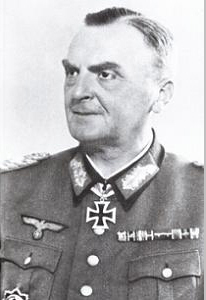
Heinrich Kittel
Eyewitness to Murder
Eyewitness to Murder

'Haftling (Prisoner) No. 94771' is a memoir written by Paula (Pesia) Frankel-Zaltzman relating her experiences in Dvinsk, Riga, and Nazi labour and concentration camps. Originally published in Yiddish in 1949, the narrative notes in minute detail the events, places and names of individuals whom the author knew or came to know in the ghettoes and camps. Frankel-Zaltzman retold her moving story of how she battled to care for her sick father in the Dvinsk Ghetto till he mercifully died a natural death under the title 'A Natural Death' published in 'Arguing with the Storm' an anthology of Yiddish women's literature.
The text details the formation of the Ghetto, life within its walls, the brutal actions of the Nazis and the Latvian collaborators and the numerous Aktzia during which most of the inhabitants were murdered. Quoted here is a short section concerning the arrival and quick disposal of the Jews of Kraslava.
The full text, published by the Concordia University Chair in Canadian Jewish Studies and The Montreal Institute for Genocide and Human Rights Studies, is available online.
Life and Death in the Dvinsk Ghetto - Haftling (Prisoner) No. 94771 by Paula Frankel-Zaltzman
"On July 20 (1941) we heard that for the remaining Jews living in town, a ghetto is being prepared on the side of the 'Grive' (the bridgehead of the Dinaburg fortress). This embittered us all, because we knew the significance of this. Besides, the Grive wasn't a place where one could live. That was where the Latvian military stabled its horses and there they sent erring soldiers for punishment and communists. Besides, the Grive was half destroyed by the German bombardment.
However, they didn't let us think much nor did they ask us if we like the place or not. On July 25, Saturday morning, all the Jews from the Grive were told to go to the ghetto.
...
On Saturday, July, 10 o'clock in the morning, we entered the ghetto. The ghetto was three kilometers from the Grive quarter that was separated from the town (Daugavpils) by the Dvina. There were very old barracks there that had served as horse stables for the Latvian military when they were stationed on that side of the river in the 'Krepose.' Now the barracks/stables had neither floors nor windows, nor a roof, only bare walls. At one time there were windows up high, now everything was ruined.
There all the Jews of the town were pressed in. People lay on top of another and it was choking. We barely found a spot where to put father down; on a piece of bare earth. There wasn't even anything with which to hand him a drink of water. To add to our troubles, it started to rain.
...
On July 27 (1941), Dr. Gurewitz came in with the engineer, Yashe Kroin, and started to complete a list of all the old people. That's what the Germans ordered because all the old and sick were to be taken to another camp, not far from the ghetto.
...
In the evening I went to the window and saw drunken Latvians, with cudgels in their hands, chasing with wild shouts, the sick, old and blind into the forest. Dr. Gurewitz went with them. Had to go with them. My uncle, Mendl Snider was also with them together with his eldest daughter Eda.
I looked at the tragic picture and thought that my heart would break.
The next day rumours started to spread that bread had been sent for the old who had been sent away. This was nothing more than a trick so that people would think that it's good there and that if it should be called for, others would let themselves be led there. But instinctively our hearts told us that the other camp doesn't exist and has never existed and that those who were dragged away are no longer alive.
We weren't given a chance to do much thinking. On Tuesday evening we heard cries from the distance. The cries came nearer and nearer until we realized that these were the cries of tortured Jews. The next day we discovered that into the ghetto the remaining Jews had been gathered from all the surrounding villages. From Dvinsk alone, then from Dondo, Vishkes, Krislovke (Kraslava), Indra, Livengoff, Nitzkol and from all the way to Riga. The Latvian population had been told that they will no longer see a Jew, not even in the museum, even if one were to pay two 'lot' (Latvian money) for a Jew there would not be one to be had.
If, up to now, the crowding was bad, it got even worse, unbearable. But the commandants of the ghetto said that it would soon become 'roomier.' A new camp/lager would be established for the newcomers and whoever will want to will be able to go along.
In three days time an order was issued that all newcomers must go to a new camp. Of the former ones, anyone who wants to can go also. First it was necessary to register; and in the evening, line up in rows of five and go to the other camp.
All the newcomers and many others immediately signed up for the other camp because they thought that it's better there.
They were all taken to the road that leads to the spa Pagulonska, eight kilometers from town. But after this 'trickery' no news came from the other camp, and we felt once more, instinctively, that something is fowl here. Soon a Christian woman came into the ghetto and told us that all those who had been led out were shot in the forest Pagulanska and that fresh pits are being dug there. . .
We were gripped with a terrible fear. In this fear we were allowed to 'live' and await our day."
...
However, they didn't let us think much nor did they ask us if we like the place or not. On July 25, Saturday morning, all the Jews from the Grive were told to go to the ghetto.
...
On Saturday, July, 10 o'clock in the morning, we entered the ghetto. The ghetto was three kilometers from the Grive quarter that was separated from the town (Daugavpils) by the Dvina. There were very old barracks there that had served as horse stables for the Latvian military when they were stationed on that side of the river in the 'Krepose.' Now the barracks/stables had neither floors nor windows, nor a roof, only bare walls. At one time there were windows up high, now everything was ruined.
There all the Jews of the town were pressed in. People lay on top of another and it was choking. We barely found a spot where to put father down; on a piece of bare earth. There wasn't even anything with which to hand him a drink of water. To add to our troubles, it started to rain.
...
On July 27 (1941), Dr. Gurewitz came in with the engineer, Yashe Kroin, and started to complete a list of all the old people. That's what the Germans ordered because all the old and sick were to be taken to another camp, not far from the ghetto.
...
In the evening I went to the window and saw drunken Latvians, with cudgels in their hands, chasing with wild shouts, the sick, old and blind into the forest. Dr. Gurewitz went with them. Had to go with them. My uncle, Mendl Snider was also with them together with his eldest daughter Eda.
I looked at the tragic picture and thought that my heart would break.
The next day rumours started to spread that bread had been sent for the old who had been sent away. This was nothing more than a trick so that people would think that it's good there and that if it should be called for, others would let themselves be led there. But instinctively our hearts told us that the other camp doesn't exist and has never existed and that those who were dragged away are no longer alive.
We weren't given a chance to do much thinking. On Tuesday evening we heard cries from the distance. The cries came nearer and nearer until we realized that these were the cries of tortured Jews. The next day we discovered that into the ghetto the remaining Jews had been gathered from all the surrounding villages. From Dvinsk alone, then from Dondo, Vishkes, Krislovke (Kraslava), Indra, Livengoff, Nitzkol and from all the way to Riga. The Latvian population had been told that they will no longer see a Jew, not even in the museum, even if one were to pay two 'lot' (Latvian money) for a Jew there would not be one to be had.
If, up to now, the crowding was bad, it got even worse, unbearable. But the commandants of the ghetto said that it would soon become 'roomier.' A new camp/lager would be established for the newcomers and whoever will want to will be able to go along.
In three days time an order was issued that all newcomers must go to a new camp. Of the former ones, anyone who wants to can go also. First it was necessary to register; and in the evening, line up in rows of five and go to the other camp.
All the newcomers and many others immediately signed up for the other camp because they thought that it's better there.
They were all taken to the road that leads to the spa Pagulonska, eight kilometers from town. But after this 'trickery' no news came from the other camp, and we felt once more, instinctively, that something is fowl here. Soon a Christian woman came into the ghetto and told us that all those who had been led out were shot in the forest Pagulanska and that fresh pits are being dug there. . .
We were gripped with a terrible fear. In this fear we were allowed to 'live' and await our day."
...
The Aktzia of the Dvinsker Jews
After the murder of the Jews from the Shtetlach surrounding Daugavpils the Ghetto was less crowded but the Nazis had no intention to save the lives of so many Jewish inhabitants. In mid-August the Jews were divided between those useful for labour and the old, sick and children. Those deemed of no use were led immediately to their deaths. In the period between July 13th 1941 to August 21th 1941 Jaeger reports that a total of 9012 Jews, Jewesses and Jewish children and 573 active communists were exterminated by a detachment of Einsatzkommando 3 in Dunaberg (Daugavpils). After a short period of relative calm the mass murder resumed. Between the 8th and 10th of November 1941 a huge Aktzia took place under the command by Obersturmbannfuhrer Gunter Tabbert. During this episode 3000 to 5000 Jews were murdered in the Pogulanka Forest with the active involvement of the local Latvian Auxiliary Police sources and members of the infamous Arajs commando who were bussed in on municipal buses from Riga to help expedite the killing. By December only 963 Jews, regarded as useful for work, remained in the Ghetto. Half were murdered in the final Aktzia on the 1st May 1942 including all the members of the Comitat, the Jewish Police and their families. On the same day the 487 remained Jews were concentrated in a few working factories, the largest of which was 'Unit 322' in the Daugavpils fortress. In October 1943 the few surviving Daugavpils Jews were transferred to the Kaiserwald Concentration Camp near Riga.
After the murder of the Jews from the Shtetlach surrounding Daugavpils the Ghetto was less crowded but the Nazis had no intention to save the lives of so many Jewish inhabitants. In mid-August the Jews were divided between those useful for labour and the old, sick and children. Those deemed of no use were led immediately to their deaths. In the period between July 13th 1941 to August 21th 1941 Jaeger reports that a total of 9012 Jews, Jewesses and Jewish children and 573 active communists were exterminated by a detachment of Einsatzkommando 3 in Dunaberg (Daugavpils). After a short period of relative calm the mass murder resumed. Between the 8th and 10th of November 1941 a huge Aktzia took place under the command by Obersturmbannfuhrer Gunter Tabbert. During this episode 3000 to 5000 Jews were murdered in the Pogulanka Forest with the active involvement of the local Latvian Auxiliary Police sources and members of the infamous Arajs commando who were bussed in on municipal buses from Riga to help expedite the killing. By December only 963 Jews, regarded as useful for work, remained in the Ghetto. Half were murdered in the final Aktzia on the 1st May 1942 including all the members of the Comitat, the Jewish Police and their families. On the same day the 487 remained Jews were concentrated in a few working factories, the largest of which was 'Unit 322' in the Daugavpils fortress. In October 1943 the few surviving Daugavpils Jews were transferred to the Kaiserwald Concentration Camp near Riga.
Source: Paula Frankel-Zaltzman. 1949. Haftling (Prisoner) No. 94771. Edited by M. M. Shafir. Translated from the Yiddish by Miriam Dashkin Beckerman. Concordia University Chair in Canadian Jewish Studies and The Montreal Institute for Genocide and Human Rights Studies. Montreal.
(From Page 5 of the Jaeger Report)
EK 3 detachment in Dunaberg in the period 13.7-21.8.41: 9,012 Jews, Jewesses and Jewish children, 573 active Communists. (Total Number of executions) 9585.
EK 3 detachment in Dunaberg in the period 13.7-21.8.41: 9,012 Jews, Jewesses and Jewish children, 573 active Communists. (Total Number of executions) 9585.
(From Page 2 of the Jaeger Report)
22.8.41 Dunaburg 3 Russ. Comm., 5 Latvian, incl. 1 murderer, 1 Russ. Guardsman, 3 Poles, 3 male Gypsies, 1 female Gypsy, 1 Gypsy child, 1 Jew, 1 Jewess, 1 Armenian, 2 Politruks (prison inspection in Dunaburg) Total 21
22.8.41 Dunaburg 3 Russ. Comm., 5 Latvian, incl. 1 murderer, 1 Russ. Guardsman, 3 Poles, 3 male Gypsies, 1 female Gypsy, 1 Gypsy child, 1 Jew, 1 Jewess, 1 Armenian, 2 Politruks (prison inspection in Dunaburg) Total 21
The Holocaust in Daugavpils in the Jaeger Report of the 1st December 1941

The Last Jews in Kraslava
After the expulsion of the Jews from Kraslava to Daugavpils the Nazis left thirty Jewish families in the town. The remaining old and week were also soon taken to the Daugavpils Ghetto and executed on the 17 August 1941. A few artisans stayed, mostly tanners and blacksmiths, with their families together with some twenty rich Jews who paid the authorities to remain in Kraslava on condition that they worked to provide basic essential services. On the 27th August 1941 these last few Jews were shot in the Augustovka Forest to the west of the town.
After the expulsion of the Jews from Kraslava to Daugavpils the Nazis left thirty Jewish families in the town. The remaining old and week were also soon taken to the Daugavpils Ghetto and executed on the 17 August 1941. A few artisans stayed, mostly tanners and blacksmiths, with their families together with some twenty rich Jews who paid the authorities to remain in Kraslava on condition that they worked to provide basic essential services. On the 27th August 1941 these last few Jews were shot in the Augustovka Forest to the west of the town.
A Few Survivors and Some Righteous Gentiles
A small number of Jewish children had been hidden by their parents with Christian families and with the priest. With the danger of betrayal the children were turned in and the children were taken to the Daugavpils Ghetto in autumn 1941. One young man tried to convert to save his life and even entered a Catholic seminary. Later he became a priest in a village till he too was identified and taken to the police. The Barkan family, were hidden by the Catholic priest in the Kraslava, on condition that the convert to Christianity. A difficult condition, which they accepted, saved the lives of Zusia and Loyba Barkan and their children Yasha (Ya'akov) and Raphaela, and Loyba's mother - Mrs. Dinerman. With time the priest concluded that their conversion would not guarantee their survival, and they were moved to the home of the Kizlo family at Szemelki, on the Belarussian (Polish) side of the Dvina river. Later Anna Kantor-Zelikman joined them from Braslav. Michael Kizlo and his family hid the Jews from 1941 till liberation in 1944. The Barkan's and a few Jews who survived in the Daugavpils Ghetto were the only remnants of the Kraslava Jewish community.
A small number of Jewish children had been hidden by their parents with Christian families and with the priest. With the danger of betrayal the children were turned in and the children were taken to the Daugavpils Ghetto in autumn 1941. One young man tried to convert to save his life and even entered a Catholic seminary. Later he became a priest in a village till he too was identified and taken to the police. The Barkan family, were hidden by the Catholic priest in the Kraslava, on condition that the convert to Christianity. A difficult condition, which they accepted, saved the lives of Zusia and Loyba Barkan and their children Yasha (Ya'akov) and Raphaela, and Loyba's mother - Mrs. Dinerman. With time the priest concluded that their conversion would not guarantee their survival, and they were moved to the home of the Kizlo family at Szemelki, on the Belarussian (Polish) side of the Dvina river. Later Anna Kantor-Zelikman joined them from Braslav. Michael Kizlo and his family hid the Jews from 1941 till liberation in 1944. The Barkan's and a few Jews who survived in the Daugavpils Ghetto were the only remnants of the Kraslava Jewish community.
Stalag 340
Though not the subject of this website is essential to note that the Dinaberg fortress also housed a prisoner of war camp known as Stalag 340 for Red Army soldiers captured by the Nazis. This awful prison camp was located in the former powder stores, warehouses and stables of the fortress on the northern bank of the Dvina. Conditions in Stalag 340 were no better than in the Ghetto on the opposite bank. Prisoners suffered poor physical conditions, torture, starvation and summary execution. Due to the dismal sanitary state of the prison epidemic typhus led to a mortality rate of up to 900 inmates a day in the winter of 1942-1943.
In flagrant violation of the Hague and Geneva Conventions, that guarantee basic rights for prisoners of war, the Nazis were directly responsible for the deaths of many thousands of Red Army soldiers in Stalag 340. At session 58 of the Nuremburg trials on February 13th 1945, it was stated that in the three years of the camp's existence, over 124,000 Soviet prisoners of war perished in Daugavpils from starvation, torture and shooting.
As a parting act of barbarism in the summer of 1944, the Nazis blew up the fortress Cathedral, over the surviving prisoners of the camp, killing many people and destroying an outstanding monument that was the centre piece of the fortress.
In flagrant violation of the Hague and Geneva Conventions, that guarantee basic rights for prisoners of war, the Nazis were directly responsible for the deaths of many thousands of Red Army soldiers in Stalag 340. At session 58 of the Nuremburg trials on February 13th 1945, it was stated that in the three years of the camp's existence, over 124,000 Soviet prisoners of war perished in Daugavpils from starvation, torture and shooting.
As a parting act of barbarism in the summer of 1944, the Nazis blew up the fortress Cathedral, over the surviving prisoners of the camp, killing many people and destroying an outstanding monument that was the centre piece of the fortress.
Covering Up the Crime
By the spring of 1944 the Germans were in retreat and now tried to conceal their crime in the Pogulanka Forest. They reopening the death pits and removed the remains of some sixteen-thousand bodies of the Jews of Dvinsk, Griva, Preili, Vishki, Livani, Dagda, Kraslava and other shtetls. For two weeks they burnt the bodies in the forest and reburied the ash. The site was fenced and signs were posted warning that trespassers would be shot.
By the spring of 1944 the Germans were in retreat and now tried to conceal their crime in the Pogulanka Forest. They reopening the death pits and removed the remains of some sixteen-thousand bodies of the Jews of Dvinsk, Griva, Preili, Vishki, Livani, Dagda, Kraslava and other shtetls. For two weeks they burnt the bodies in the forest and reburied the ash. The site was fenced and signs were posted warning that trespassers would be shot.
Stalag 340 Memorials at the Dinaburg Fortress
After the War
On the 23rd July 1944 the Red Army liberated Kraslava. In the years after the war 40 families who had fled to the USSR or had hidden in Latvia returned to Kraslava. They brought some of the victims to burial and built a memorial for the Jews of Kraslava on Udrishi Street. The Monument was renovated in 1989. A small synagogue was opened in one of the houses. In the fifties most of the Jewish moved to Riga and later most emigrated to Israel. A tiny community of mostly elderly Jews still exists in Kraslava today.
On the 23rd July 1944 the Red Army liberated Kraslava. In the years after the war 40 families who had fled to the USSR or had hidden in Latvia returned to Kraslava. They brought some of the victims to burial and built a memorial for the Jews of Kraslava on Udrishi Street. The Monument was renovated in 1989. A small synagogue was opened in one of the houses. In the fifties most of the Jewish moved to Riga and later most emigrated to Israel. A tiny community of mostly elderly Jews still exists in Kraslava today.
Memorial to Victims of Fascism Opened at the Pogulanka Massace Site in 1960
The Jewish nationality of the victims is not noted in the original Soviet period plaque.
The raised areas behind the unidentified gentleman are the death pits.
The Jewish nationality of the victims is not noted in the original Soviet period plaque.
The raised areas behind the unidentified gentleman are the death pits.
Memorial to Jewish Victims of Daugavpils and the surrounding Towns at the Pogulanka Forest - dedicated in 1991
The Sad Conclusion
During July and August of 1941 around 1400 Jews of Kraslava were murdered in the Pogulana Forest near Daugavpils (Dvinsk) and in the Augustovka Forest near Kraslava, thus effectively ending three centuries of Jewish life in the town. From the 26th November to 1st December 1944 the Soviets established a commission to identify and investigate the atrocities of the Nazis invaders and their accomplices.
During July and August of 1941 around 1400 Jews of Kraslava were murdered in the Pogulana Forest near Daugavpils (Dvinsk) and in the Augustovka Forest near Kraslava, thus effectively ending three centuries of Jewish life in the town. From the 26th November to 1st December 1944 the Soviets established a commission to identify and investigate the atrocities of the Nazis invaders and their accomplices.
Memorial to Jewish Victims of Kraslava in Udrishi Street in Kraslava and Photographs of the Dedication Ceremony
Justice?
There is no justice system that can cope with murder on this scale. The results of the Holocaust are beyond retribution and they resulted in the physical annihilation of a third of the Jewish nation and of the destruction of historic centres of learning, Yiddish culture and language.
Still, it is worth noting briefly the ineffectual system of justice applied to the brutes of the Einsatzgruppen and to the Latvian collaborators. Mass murder was often punished with amazing leniency - if at all.
1) Heydrich was assassinated by Czech resistance in Prague on May 27th 1942.
2) Stahlecker died in 1942 from wounds sustained in battle with Soviet partisans near Krasnogvardeysk, Russia.
3) Jaeger assumed a false identity and worked as an agriculturalist. He was only exposed when his report came to light in March 1959. He committed suicide in prison awaiting trial in June 1959.
4) After the war Erich Ehrlinger hid, eventually becoming the Volkswagen representative in Karlsruhe in 1954. Arrested in 1959 he was sentenced by the district court in Karlsruhe in December 1961 to twelve years imprisonment, but was released in 1964. He died peacefully in 1990 in Karlsruhe.
5) Joachim Hamman died in April 1945 in unclear circumstances.
6) No evidence for any proceedings against the local collaborators from Kraslava & Daugavpils has been forthcoming. There is no trail data for Breidis, Eduards Zaube or Roberts Bluzmanis. A long list of Lithuanian and Latvian collaborationist assassins to Einsatzkommando 3 and of the Arajs Kommando that operated together with Jaeger and Hamman is available. A small number were tried, some only the past decade. Most continued their lives without any legal proceedings being conducted against them.
The following are trial reports for cases brought against Einsatzkomando 1b and for Gunter Hugo Freidrich for mass extermination crimes in Daugavpils and other places. All the defendants were acquitted or released due to technicalities:
Case no: Nr.526
Crime Category: Other Mass Extermination Crimes, Mass Extermination Crimes by Einsatzgruppen
Accused:
E., Erich - Judgment annulled by the Bundesgerichtshof (Federal Supreme Court), subsequent proceeding suspended
H., Ludwig - Acquittal
Kl., Werner - Acquittal
K., Hans - Acquittal + Proceeding suspended
Ku., Siegfried - Acquittal
P., Erich - Acquittal
Court: Landgericht (District Court) Karlsruhe 20 December 1961; Bundesgerichtshof (Federal Supreme Court) 28 May 1963
Country where the crime was committed: Latvia, Lithuania, Soviet Union
Crime Location: Kovno, Dunaburg, Rositten, Kiev, Uman, Gut Michalowka (near Kiev)
Crime Date: June 1941 - July 1941, January 1942 to September 1943
Victims: Prisoners, Jews, Civilians
Nationality: Lithuanian, Latvian, Soviet
Office: Einsatzgruppen EK1b, Polizei Sipo Kiev, Polizei Sipo Uman
Subject of the proceeding: Mass shootings of Lithuanian and Latvian Jews at the beginning of the military campaign against the Soviet Union, by Einsatzkommando 1b. Mass and individual killings of Jewish and non-Jewish Soviet civilians by means of gassings in 'gas vans' and shootings by the Sipo Kiev
Published in Justiz und NS-Verbrechen Vol. XVIII
Case Nr. 708
Crime Category: Other Mass Extermination Crimes
Accused: Tab., Gunter Hugo Friedrich - Acquittal
Court: Landgericht (District Court) Dortmund 19 June 1969
Country where the crime was committed: Latvia
Crime Location: Dunaburg
Crime Date: 1941 - 1942
Victims: Jews
Nationality: Latvian
Office: Polizei Sipo (Security Police) Dunaburg
Subject of the proceeding: Mass and single shootings of at least 3500 Jews within the jurisdiction of the Sipo branch office Dunaburg
Published in Justiz und NS-Verbrechen Vol. XXXII
There is no justice system that can cope with murder on this scale. The results of the Holocaust are beyond retribution and they resulted in the physical annihilation of a third of the Jewish nation and of the destruction of historic centres of learning, Yiddish culture and language.
Still, it is worth noting briefly the ineffectual system of justice applied to the brutes of the Einsatzgruppen and to the Latvian collaborators. Mass murder was often punished with amazing leniency - if at all.
1) Heydrich was assassinated by Czech resistance in Prague on May 27th 1942.
2) Stahlecker died in 1942 from wounds sustained in battle with Soviet partisans near Krasnogvardeysk, Russia.
3) Jaeger assumed a false identity and worked as an agriculturalist. He was only exposed when his report came to light in March 1959. He committed suicide in prison awaiting trial in June 1959.
4) After the war Erich Ehrlinger hid, eventually becoming the Volkswagen representative in Karlsruhe in 1954. Arrested in 1959 he was sentenced by the district court in Karlsruhe in December 1961 to twelve years imprisonment, but was released in 1964. He died peacefully in 1990 in Karlsruhe.
5) Joachim Hamman died in April 1945 in unclear circumstances.
6) No evidence for any proceedings against the local collaborators from Kraslava & Daugavpils has been forthcoming. There is no trail data for Breidis, Eduards Zaube or Roberts Bluzmanis. A long list of Lithuanian and Latvian collaborationist assassins to Einsatzkommando 3 and of the Arajs Kommando that operated together with Jaeger and Hamman is available. A small number were tried, some only the past decade. Most continued their lives without any legal proceedings being conducted against them.
The following are trial reports for cases brought against Einsatzkomando 1b and for Gunter Hugo Freidrich for mass extermination crimes in Daugavpils and other places. All the defendants were acquitted or released due to technicalities:
Case no: Nr.526
Crime Category: Other Mass Extermination Crimes, Mass Extermination Crimes by Einsatzgruppen
Accused:
E., Erich - Judgment annulled by the Bundesgerichtshof (Federal Supreme Court), subsequent proceeding suspended
H., Ludwig - Acquittal
Kl., Werner - Acquittal
K., Hans - Acquittal + Proceeding suspended
Ku., Siegfried - Acquittal
P., Erich - Acquittal
Court: Landgericht (District Court) Karlsruhe 20 December 1961; Bundesgerichtshof (Federal Supreme Court) 28 May 1963
Country where the crime was committed: Latvia, Lithuania, Soviet Union
Crime Location: Kovno, Dunaburg, Rositten, Kiev, Uman, Gut Michalowka (near Kiev)
Crime Date: June 1941 - July 1941, January 1942 to September 1943
Victims: Prisoners, Jews, Civilians
Nationality: Lithuanian, Latvian, Soviet
Office: Einsatzgruppen EK1b, Polizei Sipo Kiev, Polizei Sipo Uman
Subject of the proceeding: Mass shootings of Lithuanian and Latvian Jews at the beginning of the military campaign against the Soviet Union, by Einsatzkommando 1b. Mass and individual killings of Jewish and non-Jewish Soviet civilians by means of gassings in 'gas vans' and shootings by the Sipo Kiev
Published in Justiz und NS-Verbrechen Vol. XVIII
Case Nr. 708
Crime Category: Other Mass Extermination Crimes
Accused: Tab., Gunter Hugo Friedrich - Acquittal
Court: Landgericht (District Court) Dortmund 19 June 1969
Country where the crime was committed: Latvia
Crime Location: Dunaburg
Crime Date: 1941 - 1942
Victims: Jews
Nationality: Latvian
Office: Polizei Sipo (Security Police) Dunaburg
Subject of the proceeding: Mass and single shootings of at least 3500 Jews within the jurisdiction of the Sipo branch office Dunaburg
Published in Justiz und NS-Verbrechen Vol. XXXII
From which we learn that It is possible to commit Genocide and get away with it!
Copyright © 2008-9 Jon Seligman. All Rights Reserved.
Sources
This is not an article researched from primary sources. Much of the bibliographical material available is written in Russian, Polish and Latvian and is thus not accessible to me. Please feel welcome to contact if you wish to correct or augment the information.
1 - Kraslava. In. Dov Levin. 1988. Ed. Pinkas Hakehilot: Latvia ve Estonia. Yad Vashem. Jerusalem Pp. 226-233.(Hebrew).
2 - Daugavpils. In. Dov Levin. 1988. Ed. Pinkas Hakehilot: Latvia ve Estonia. Yad Vashem. Jerusalem Pp. 83-106.(Hebrew).
3 - Latvia's Jewish Community: History, Tragedy, Revival; Leo Dribins, Armands Gutmanis, Margers Vestermani at the Latvian Foreign Ministry website.
4 - The Internet sites linked throughout the text.
This is not an article researched from primary sources. Much of the bibliographical material available is written in Russian, Polish and Latvian and is thus not accessible to me. Please feel welcome to contact if you wish to correct or augment the information.
1 - Kraslava. In. Dov Levin. 1988. Ed. Pinkas Hakehilot: Latvia ve Estonia. Yad Vashem. Jerusalem Pp. 226-233.(Hebrew).
2 - Daugavpils. In. Dov Levin. 1988. Ed. Pinkas Hakehilot: Latvia ve Estonia. Yad Vashem. Jerusalem Pp. 83-106.(Hebrew).
3 - Latvia's Jewish Community: History, Tragedy, Revival; Leo Dribins, Armands Gutmanis, Margers Vestermani at the Latvian Foreign Ministry website.
4 - The Internet sites linked throughout the text.
The Small Synagogue of Kraslava after WWII
